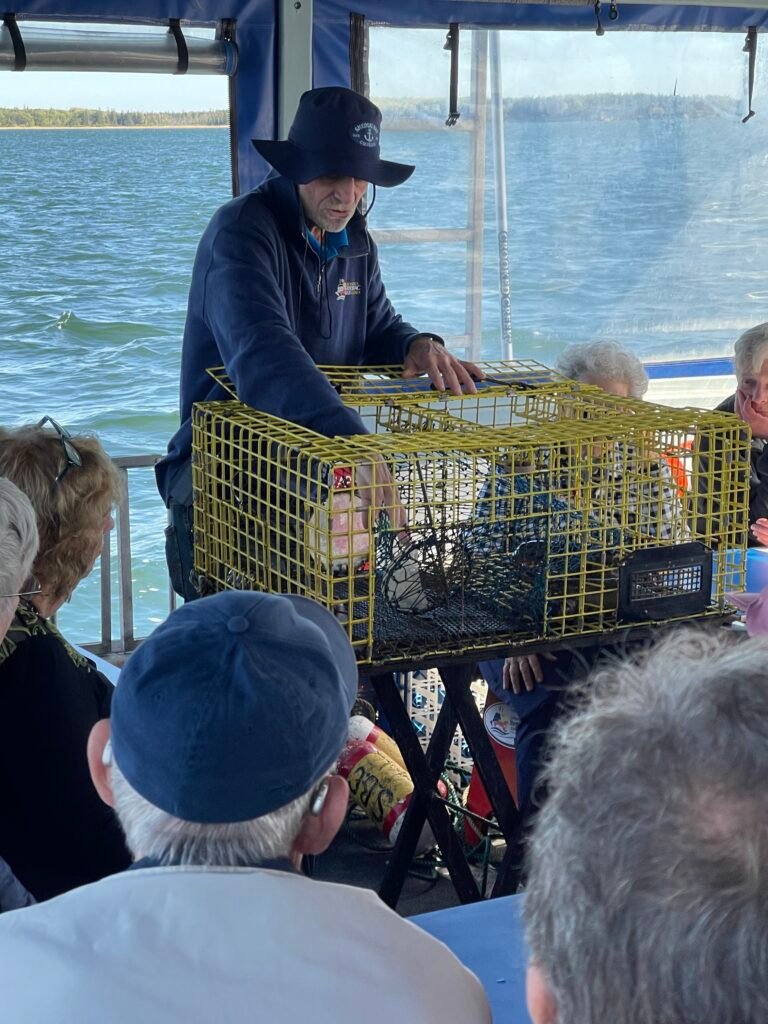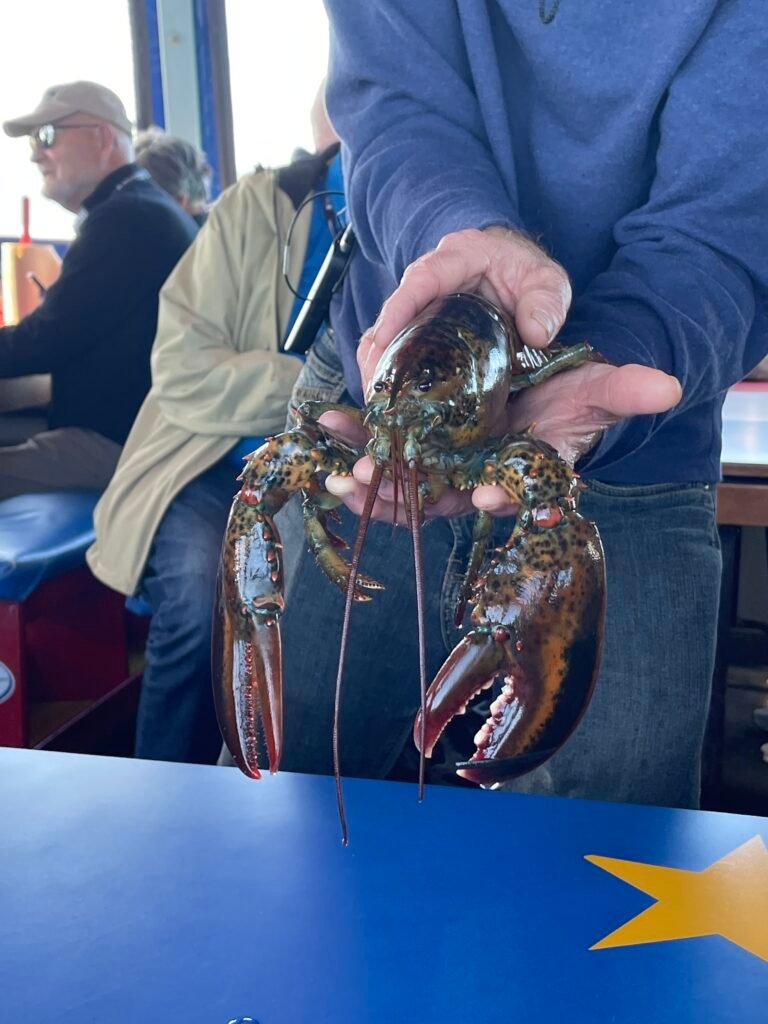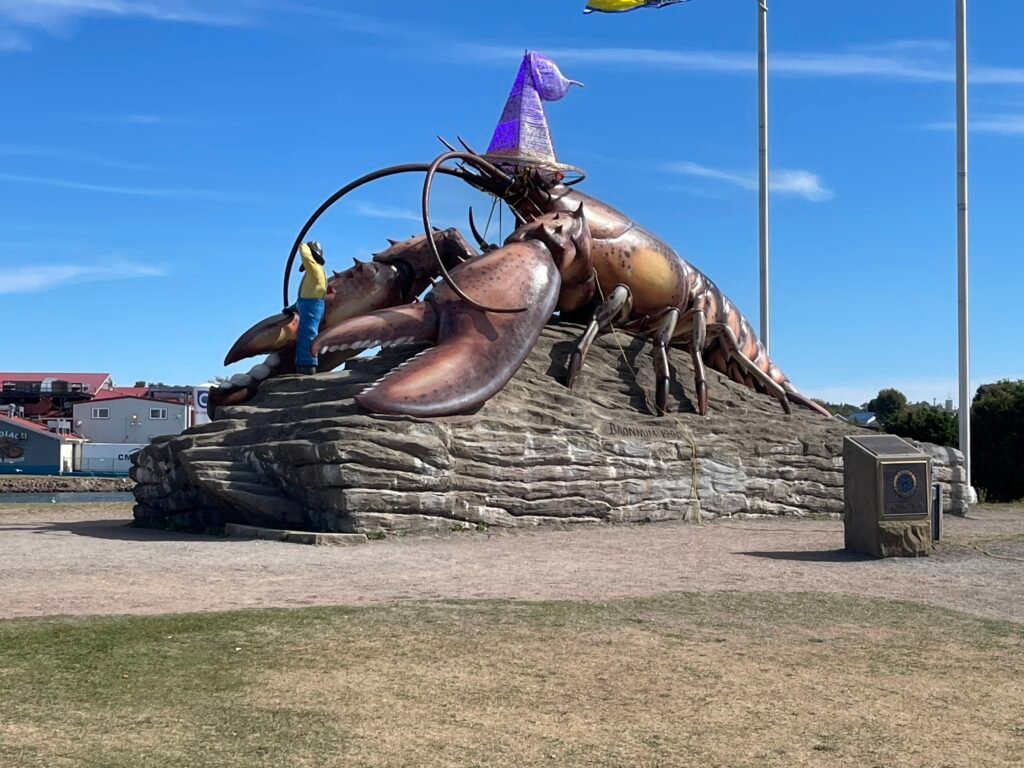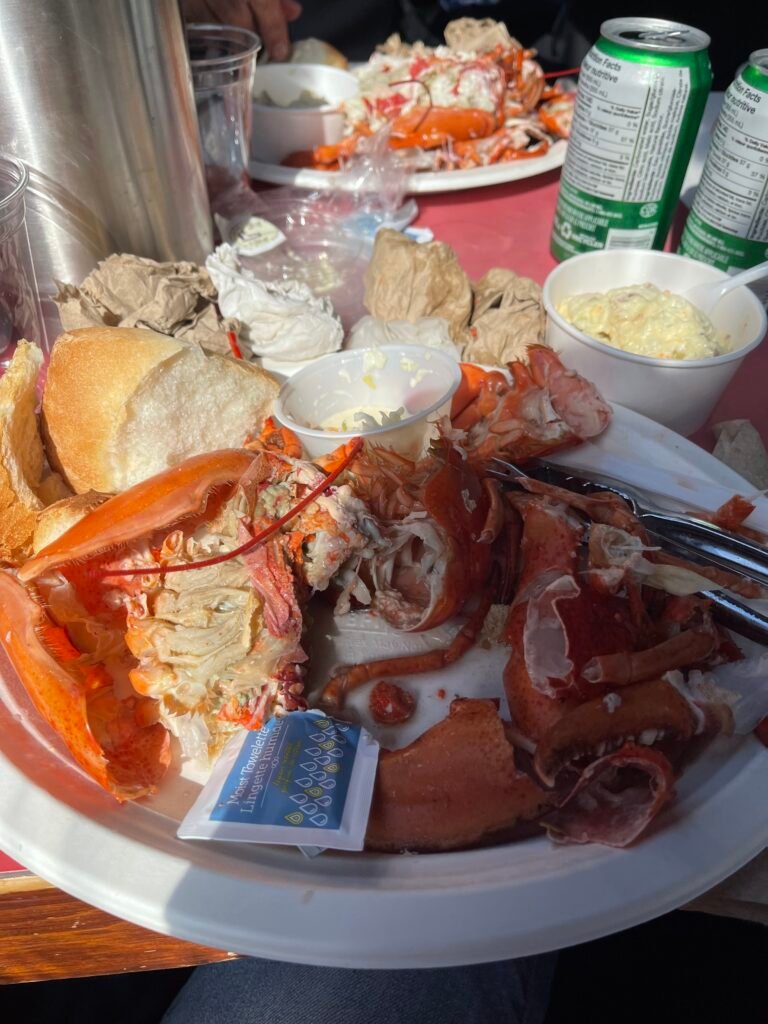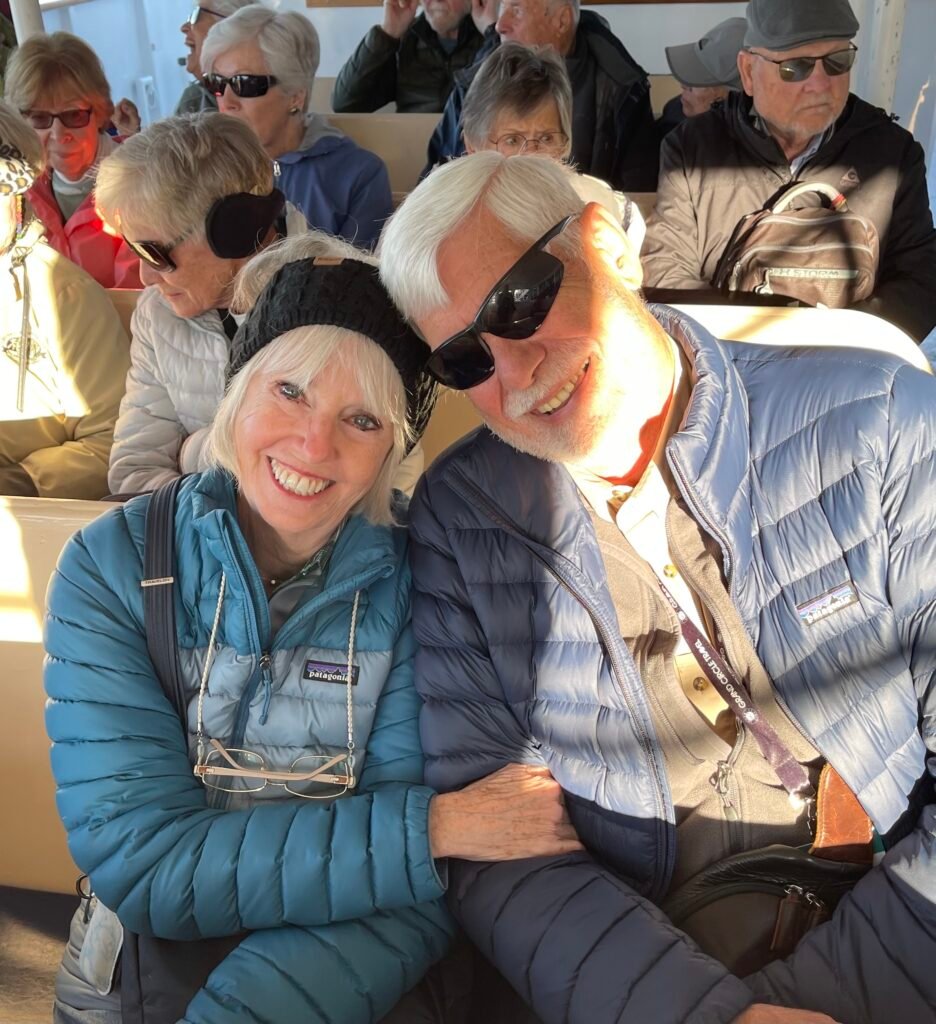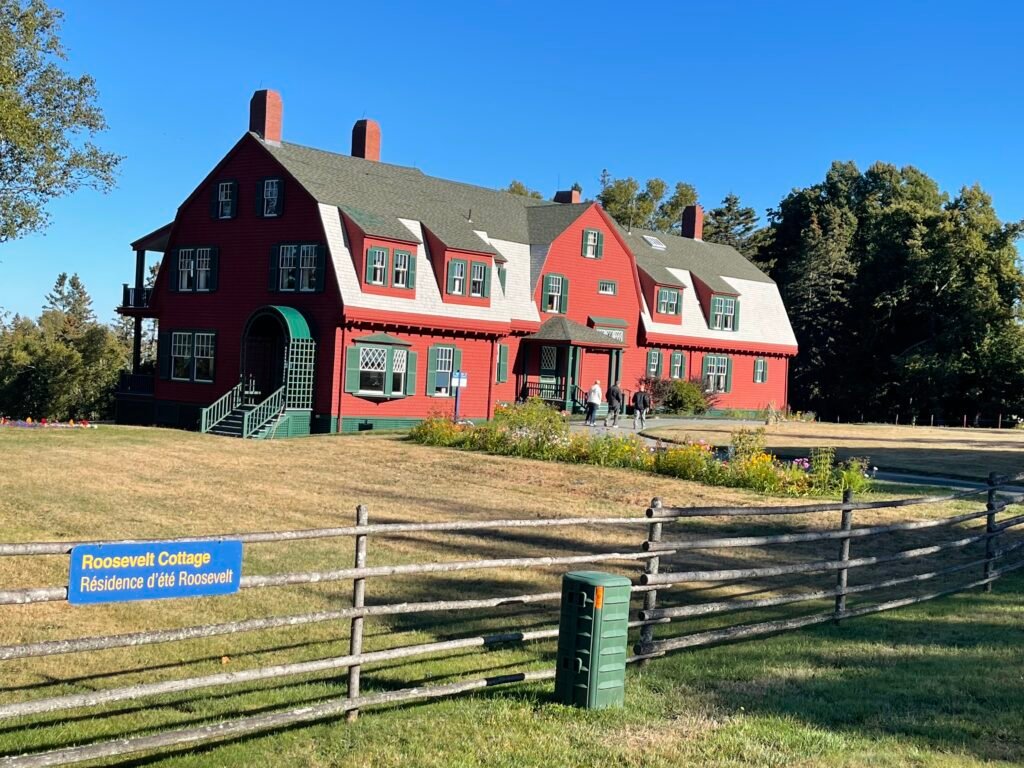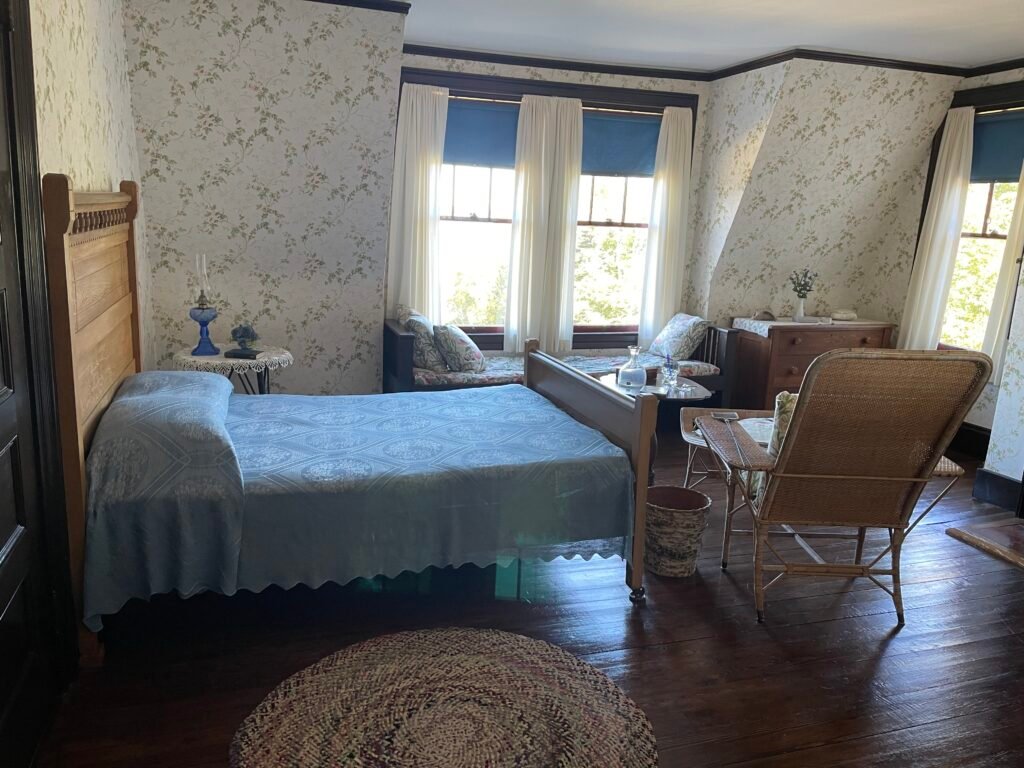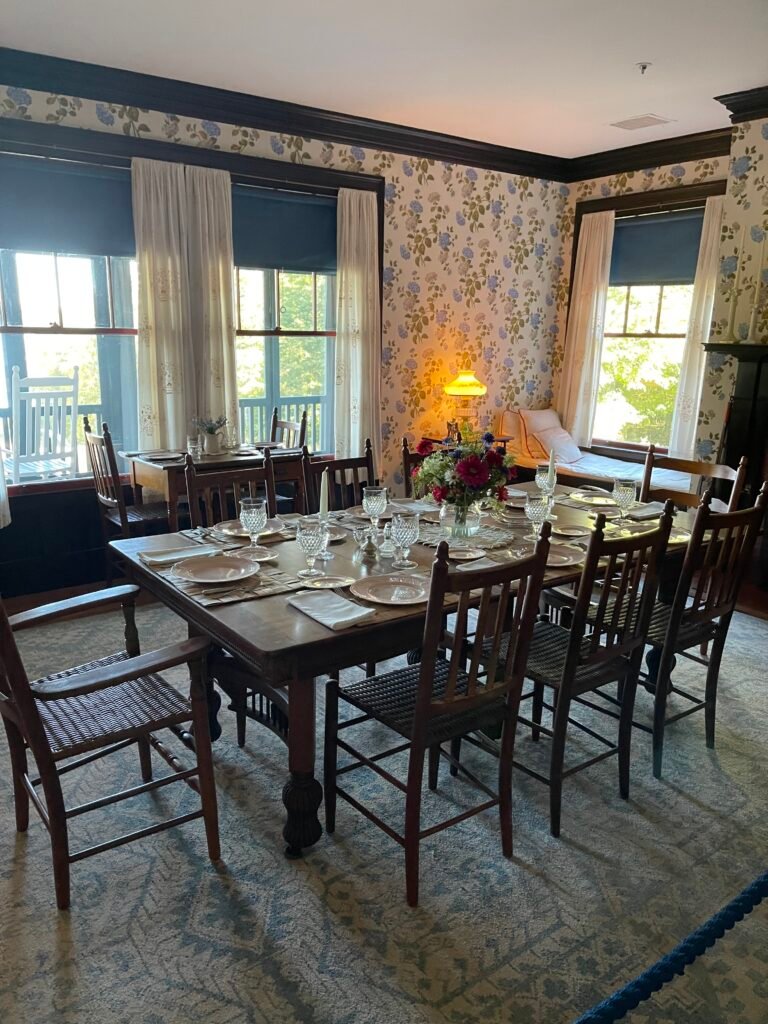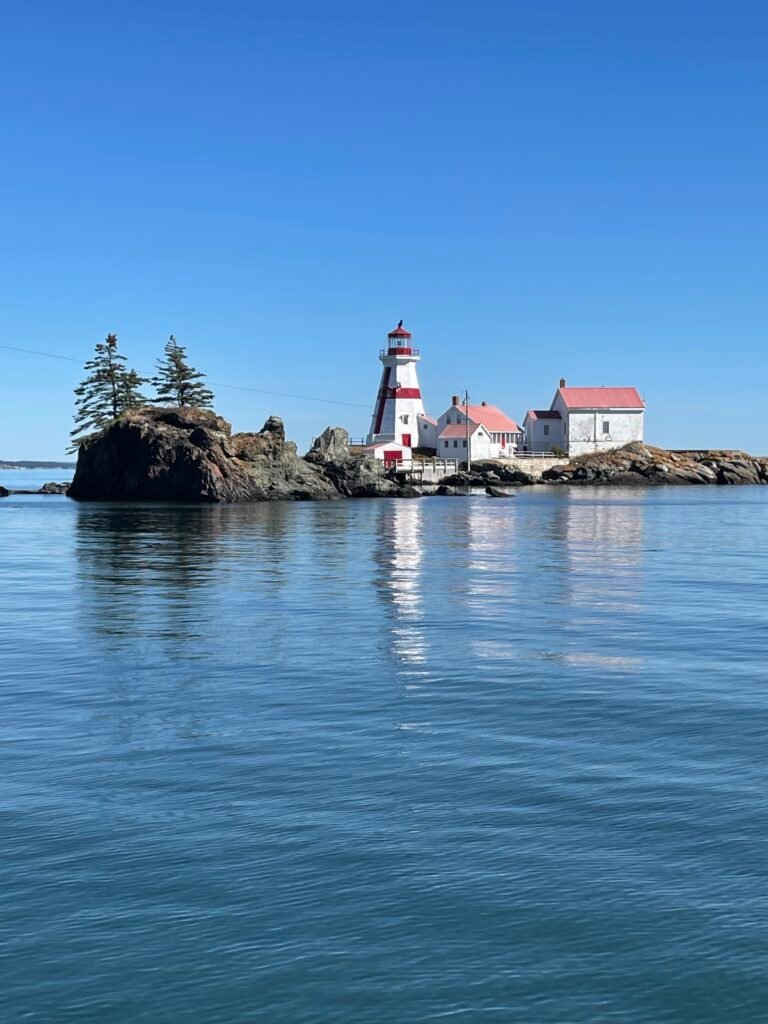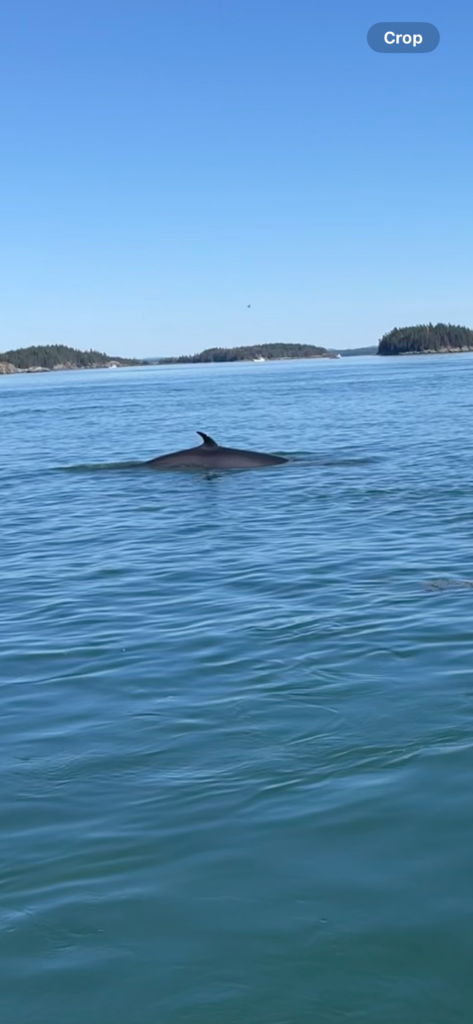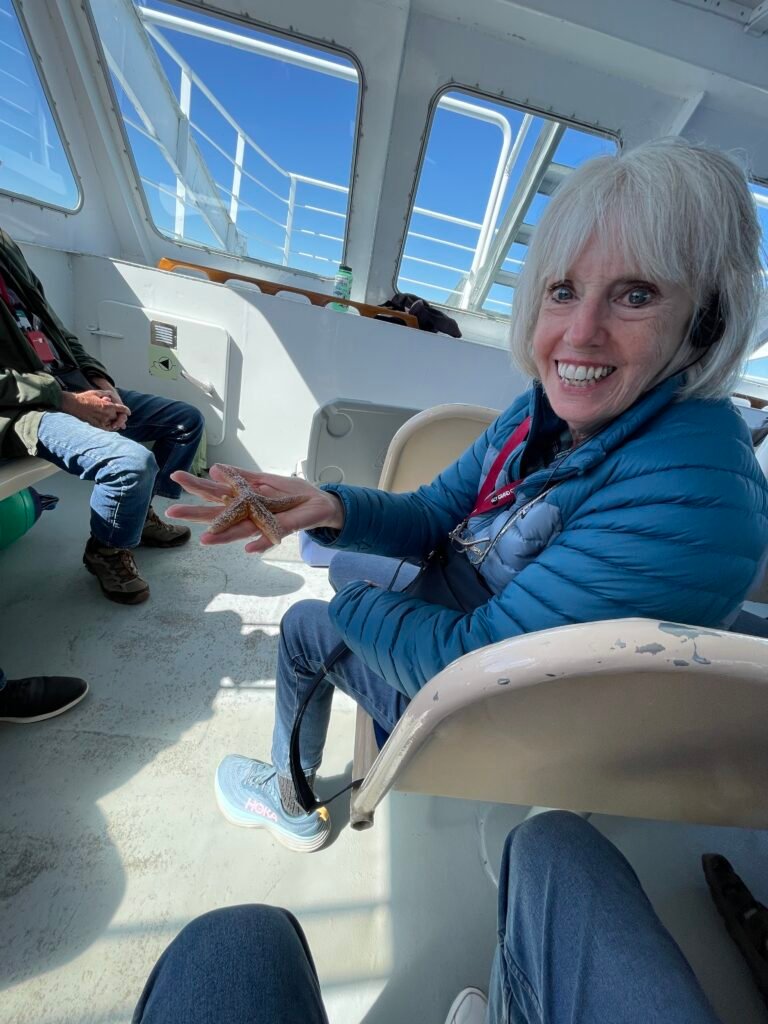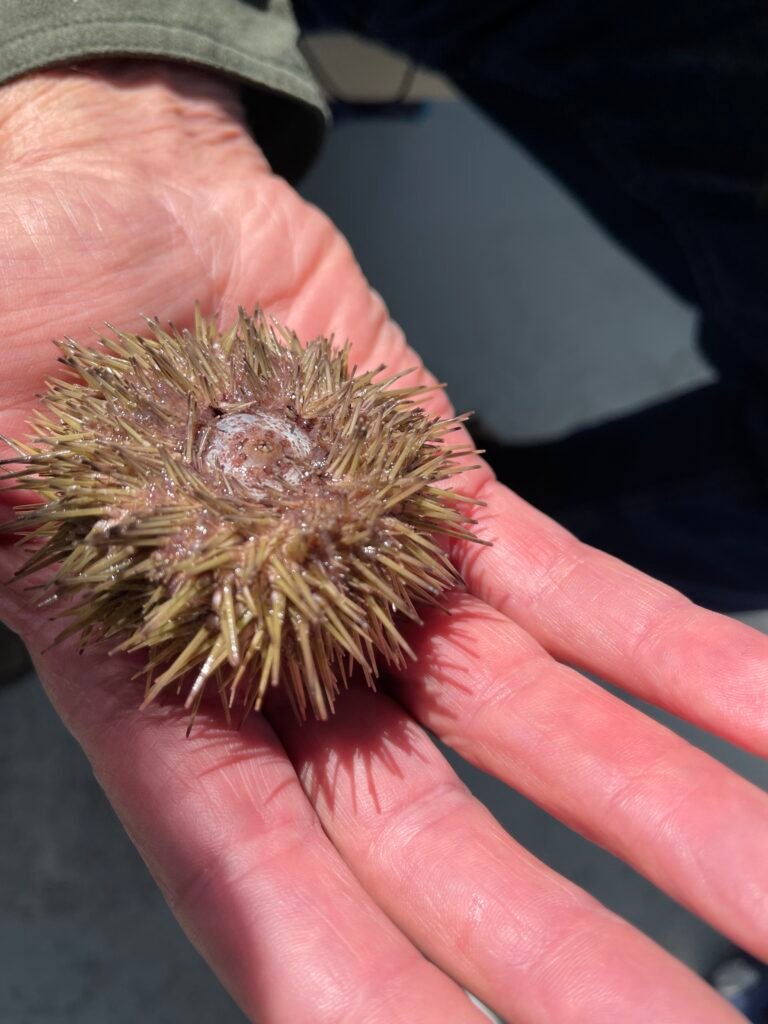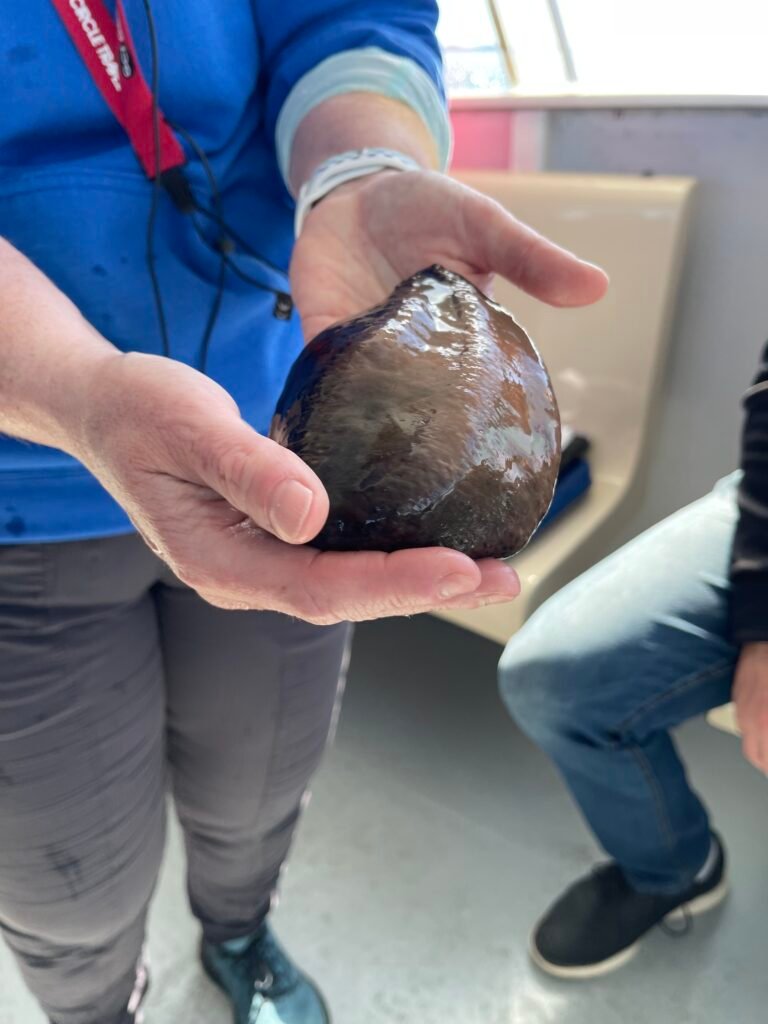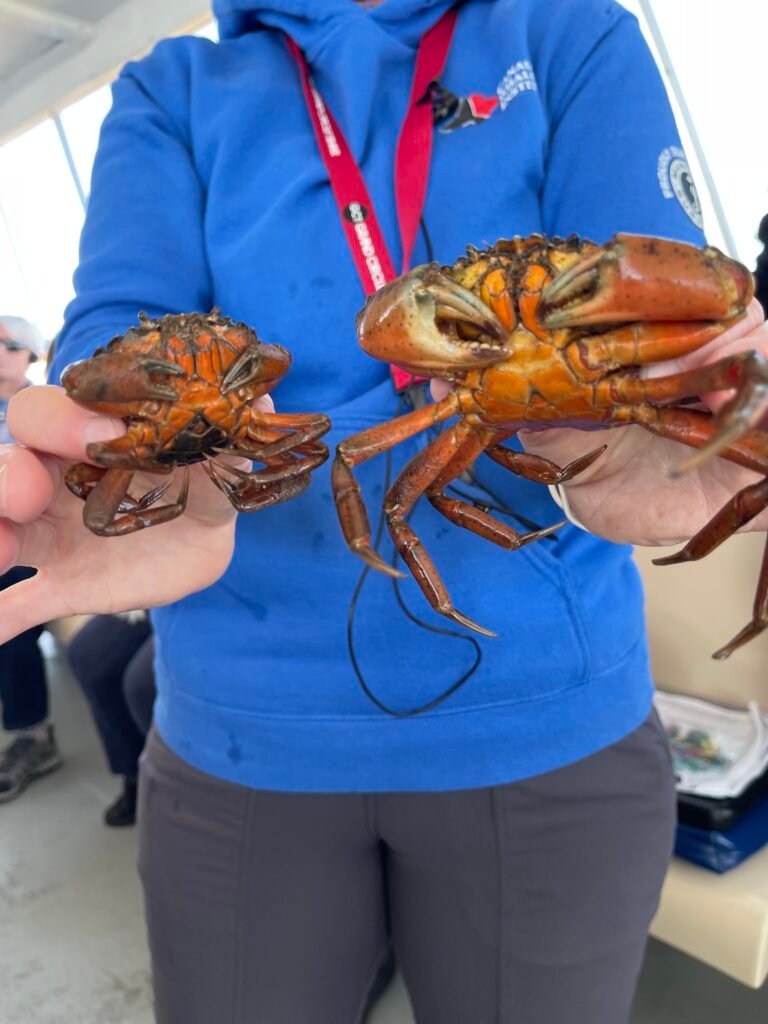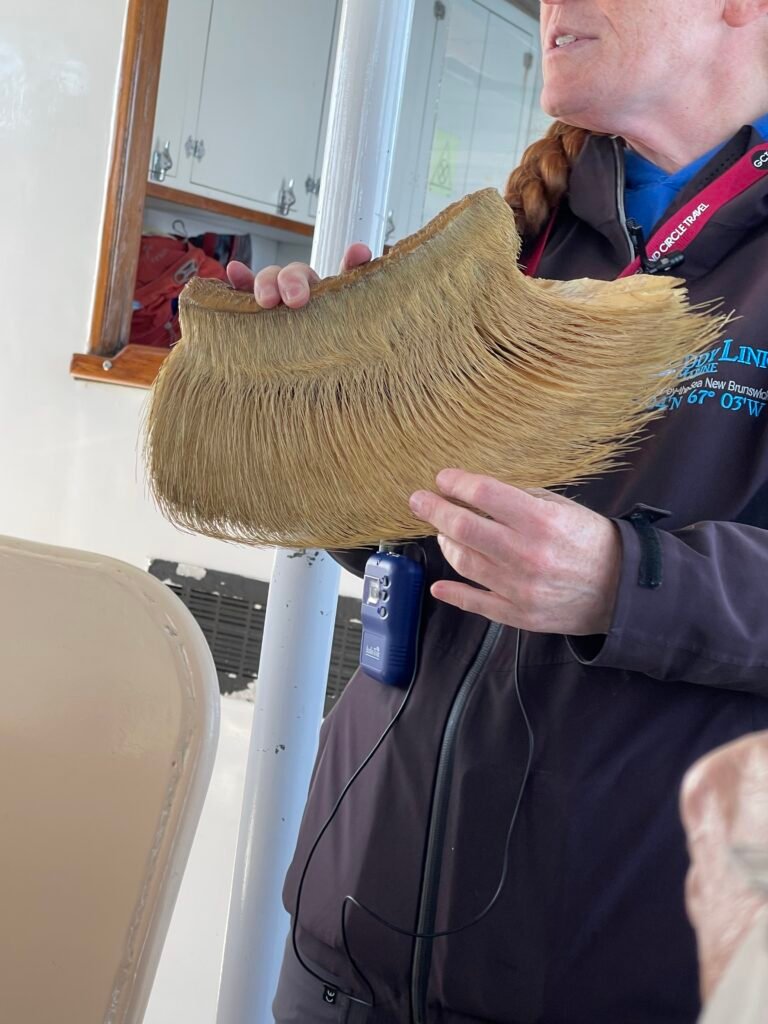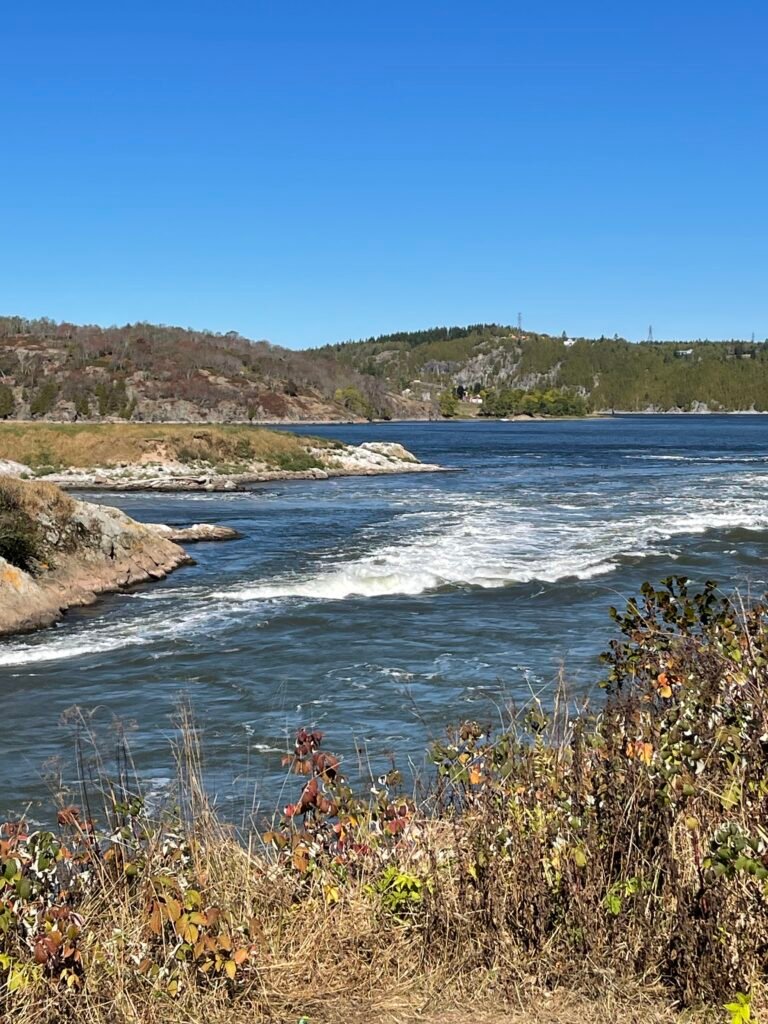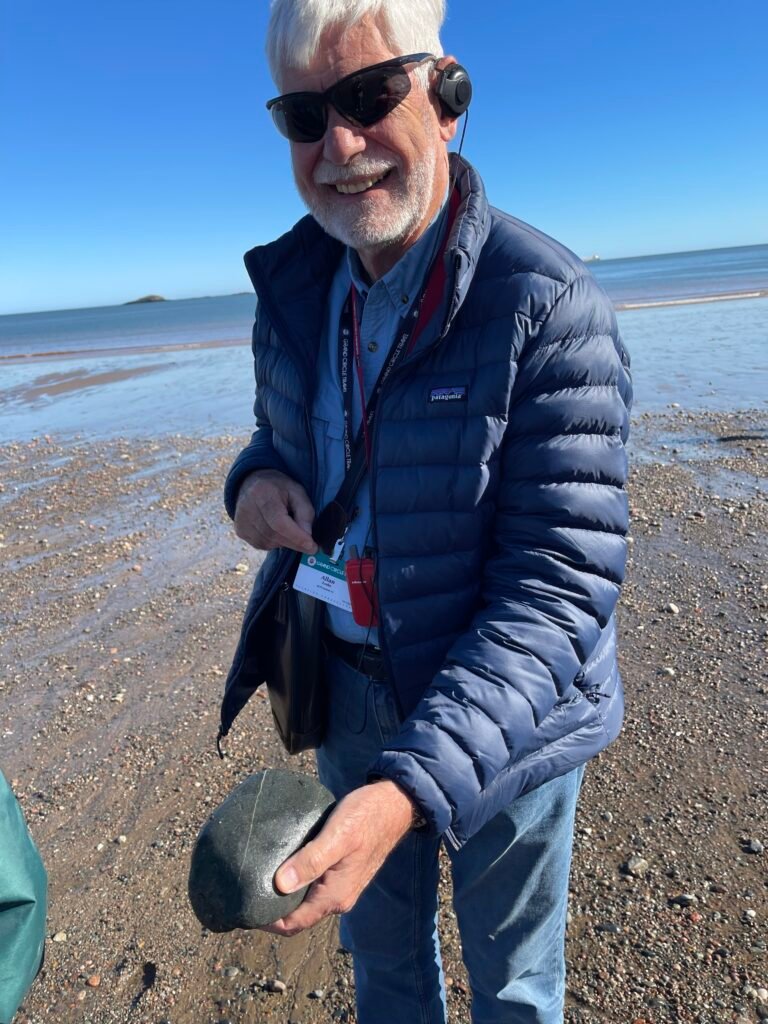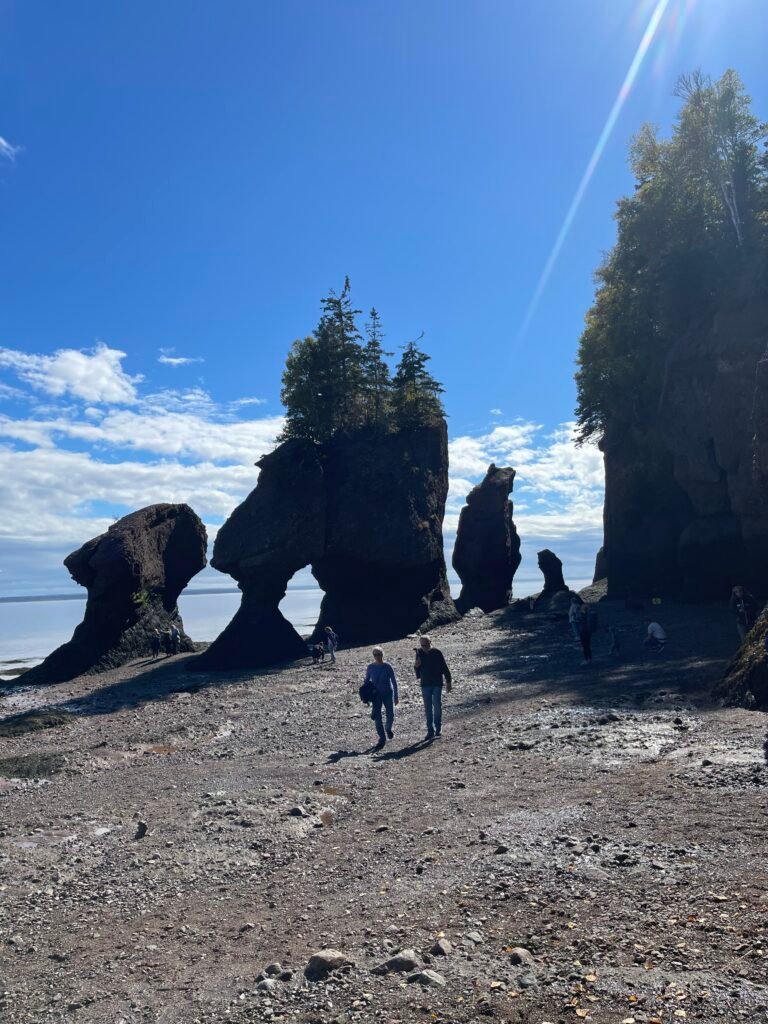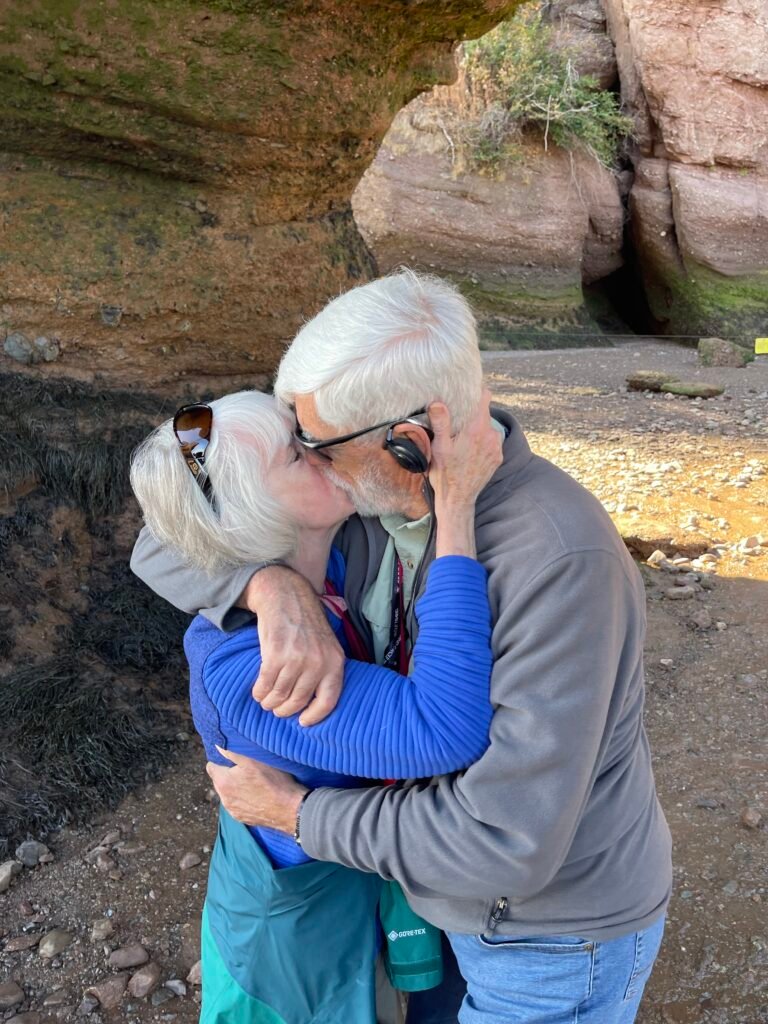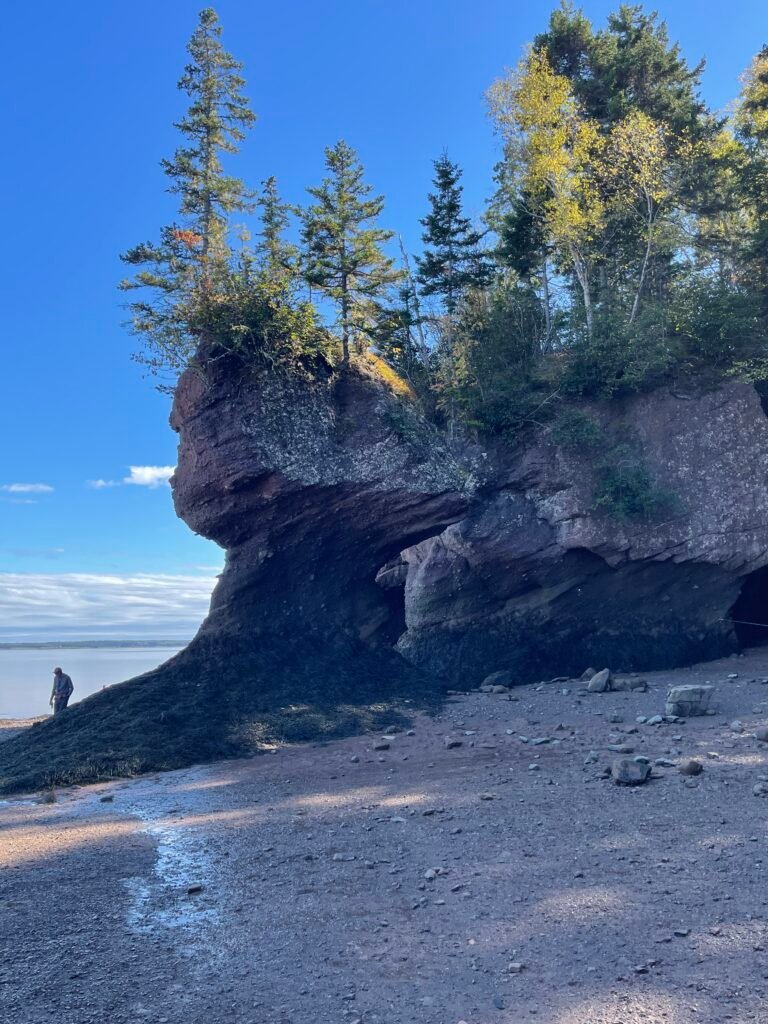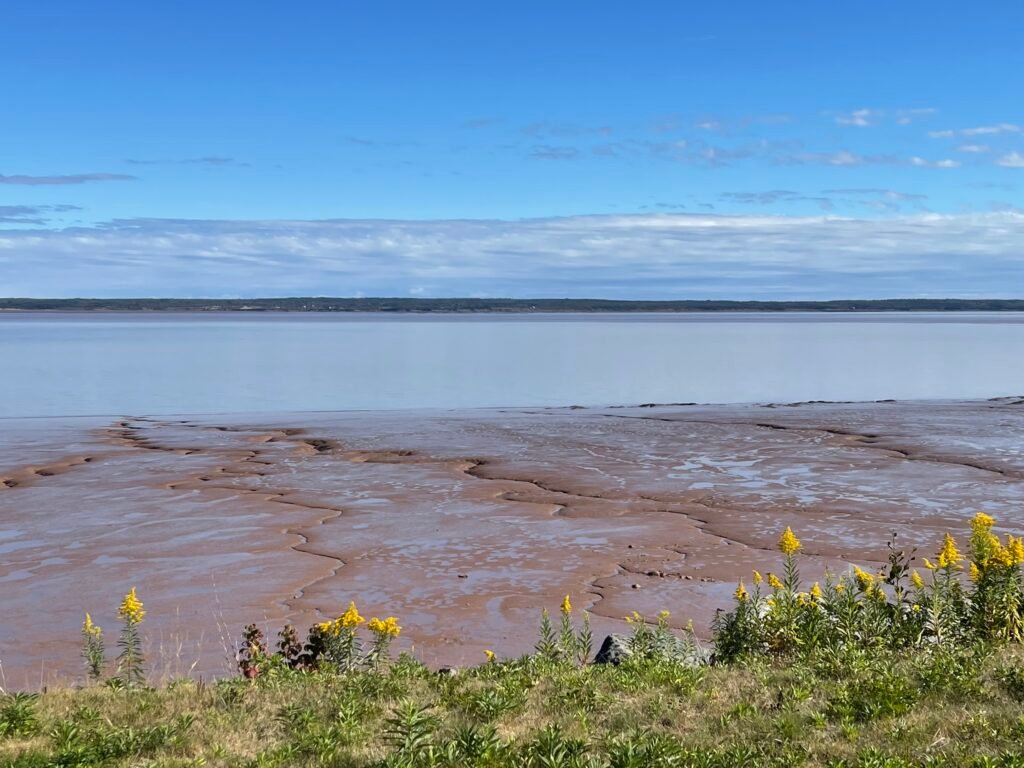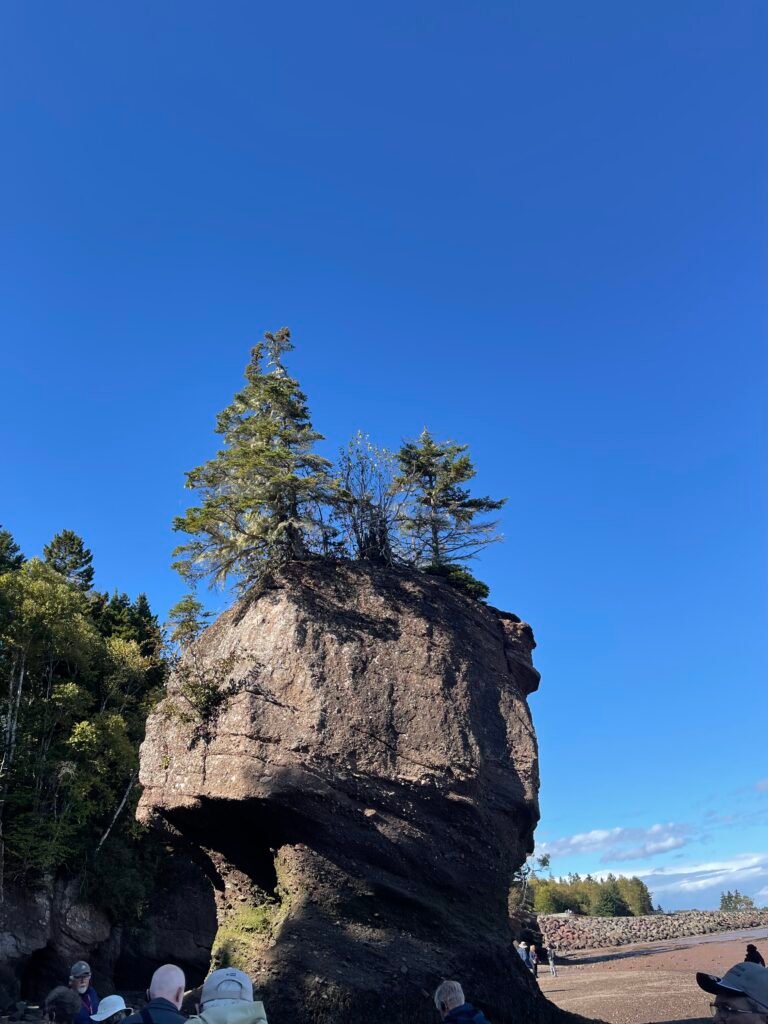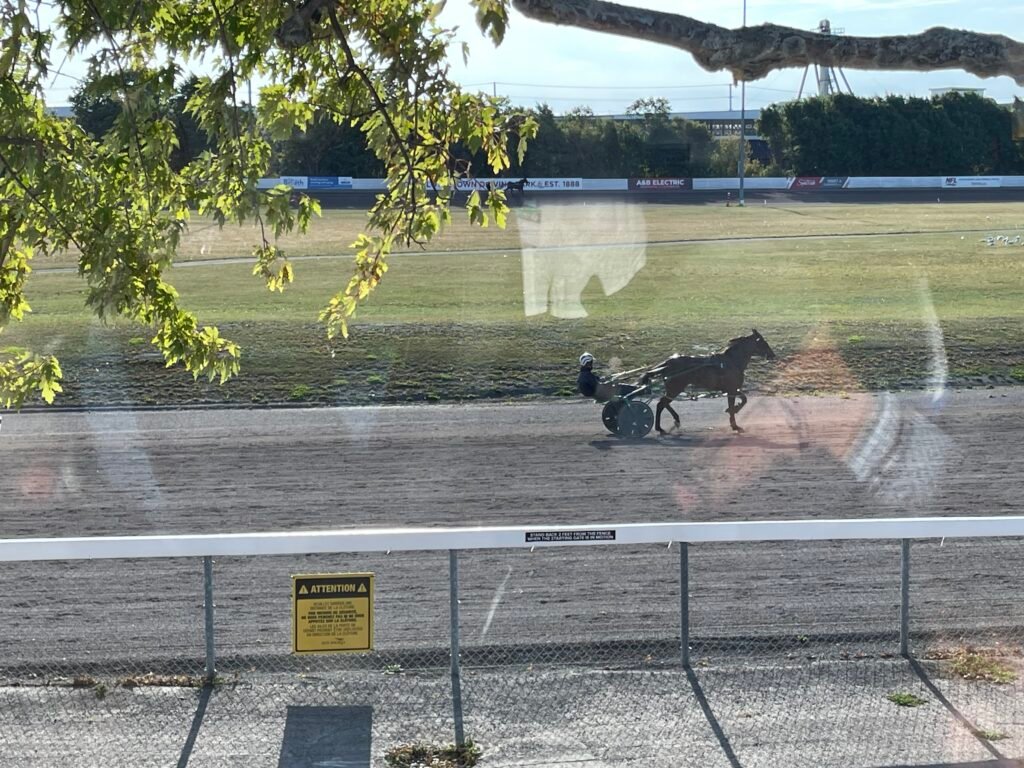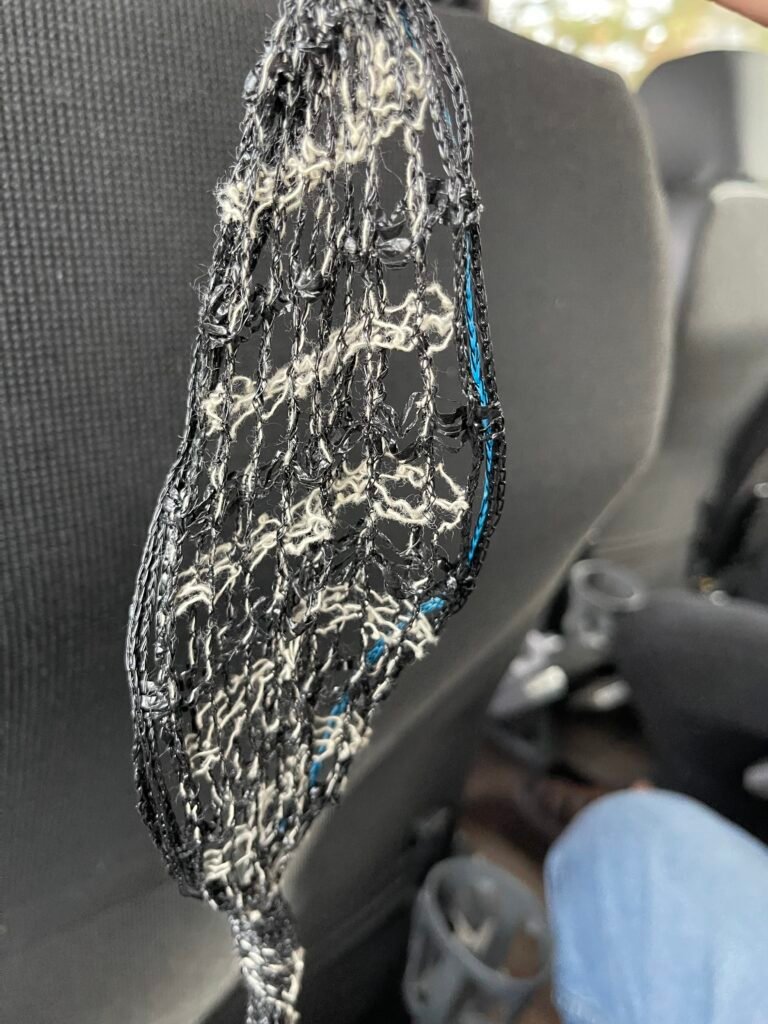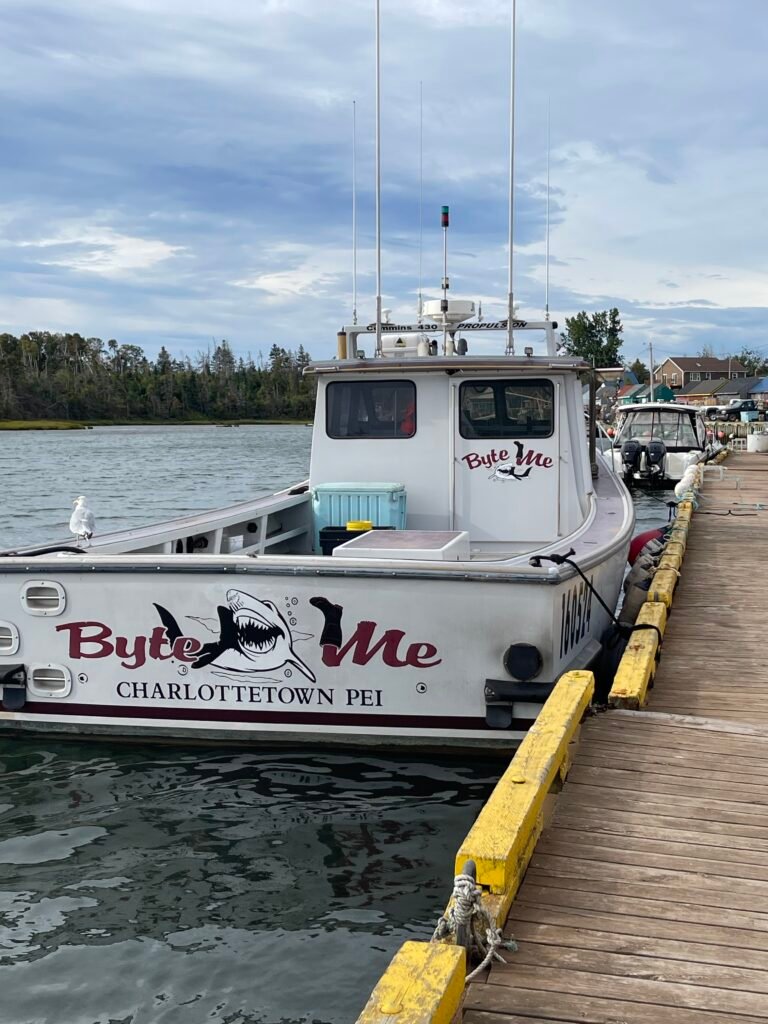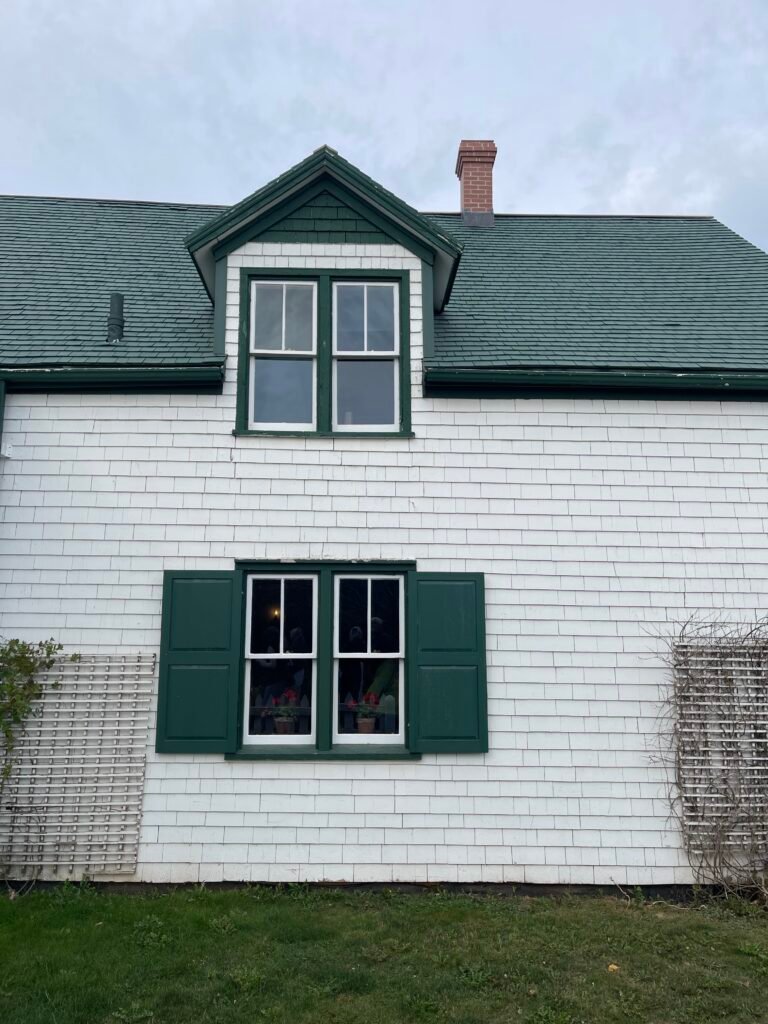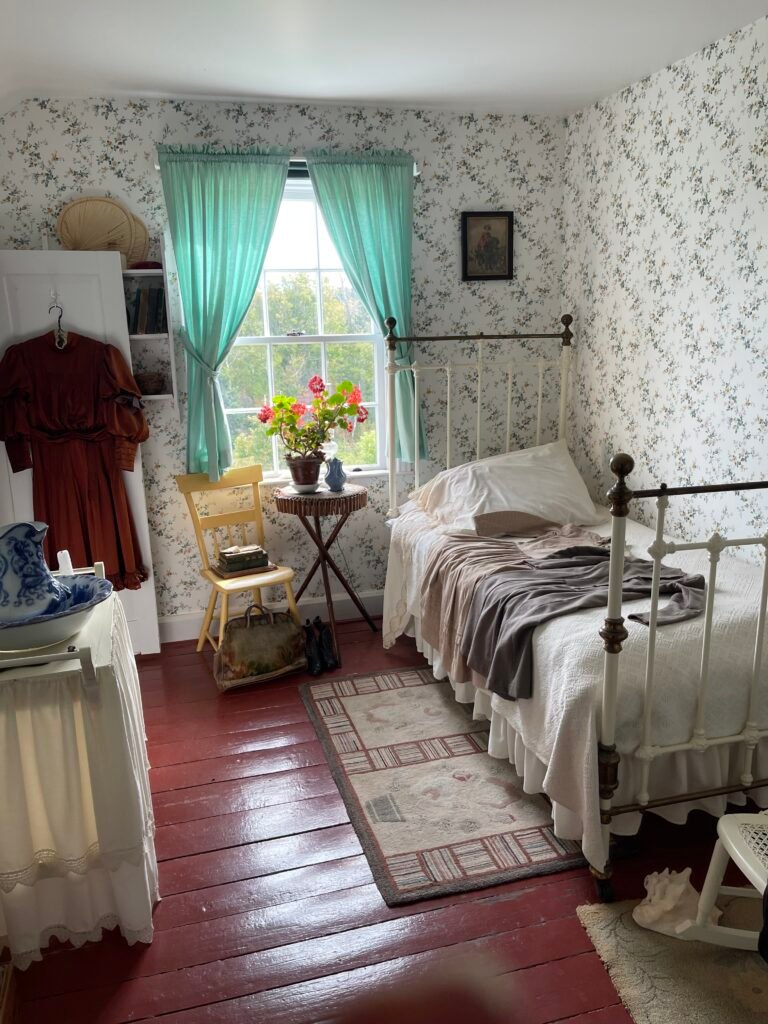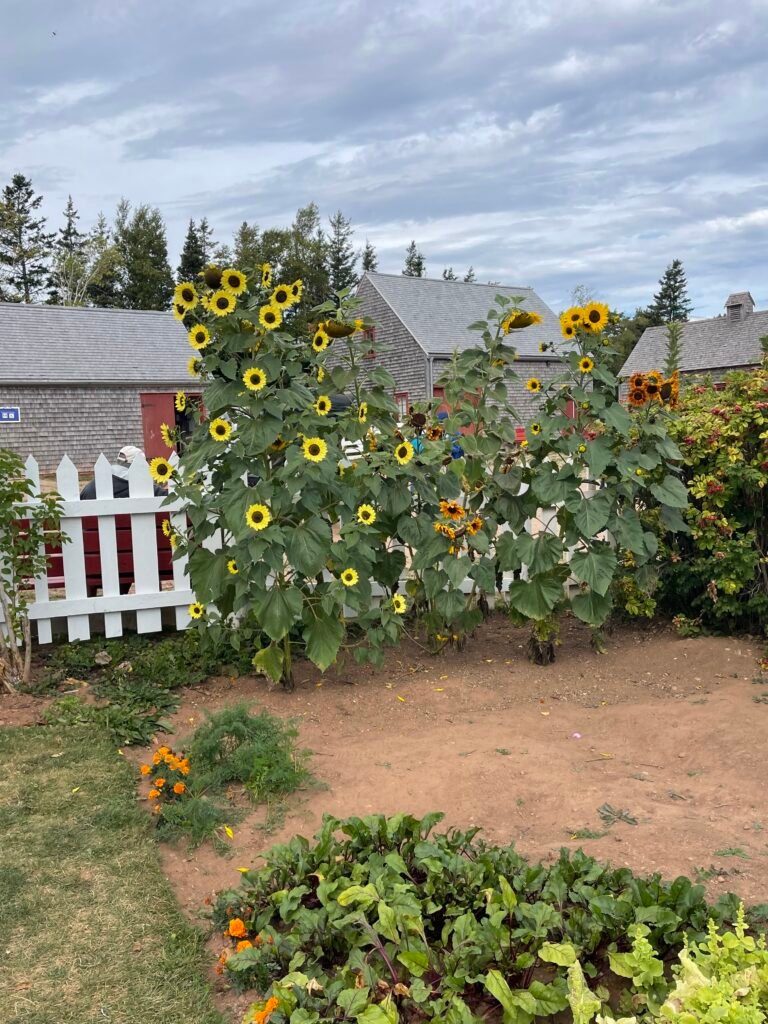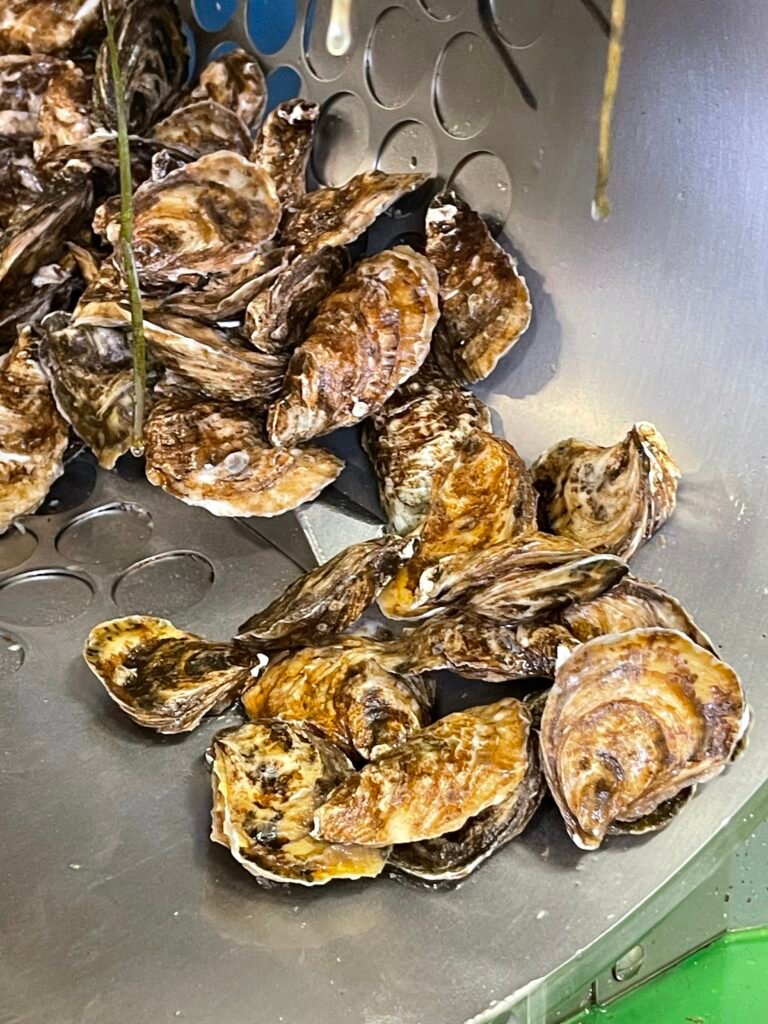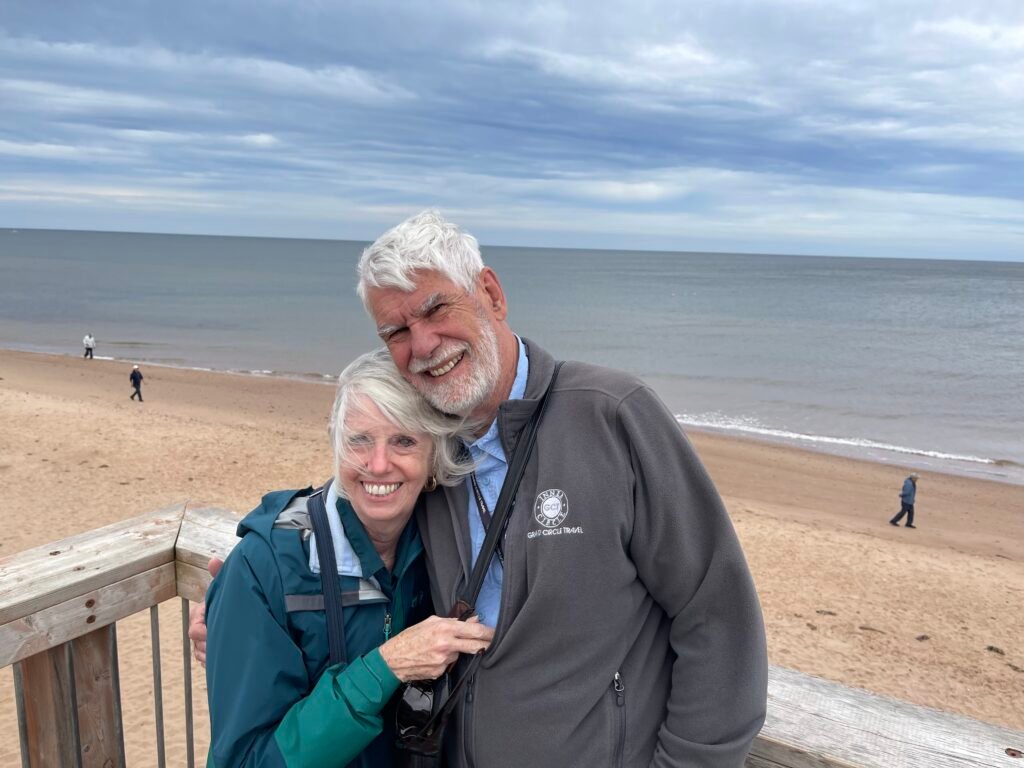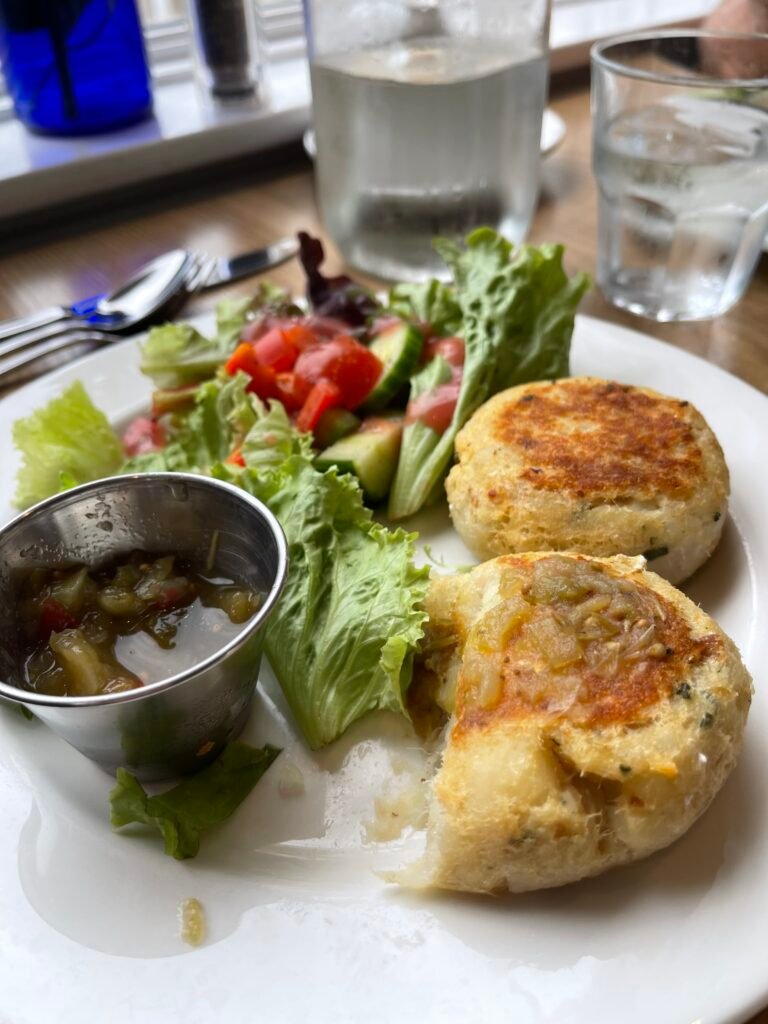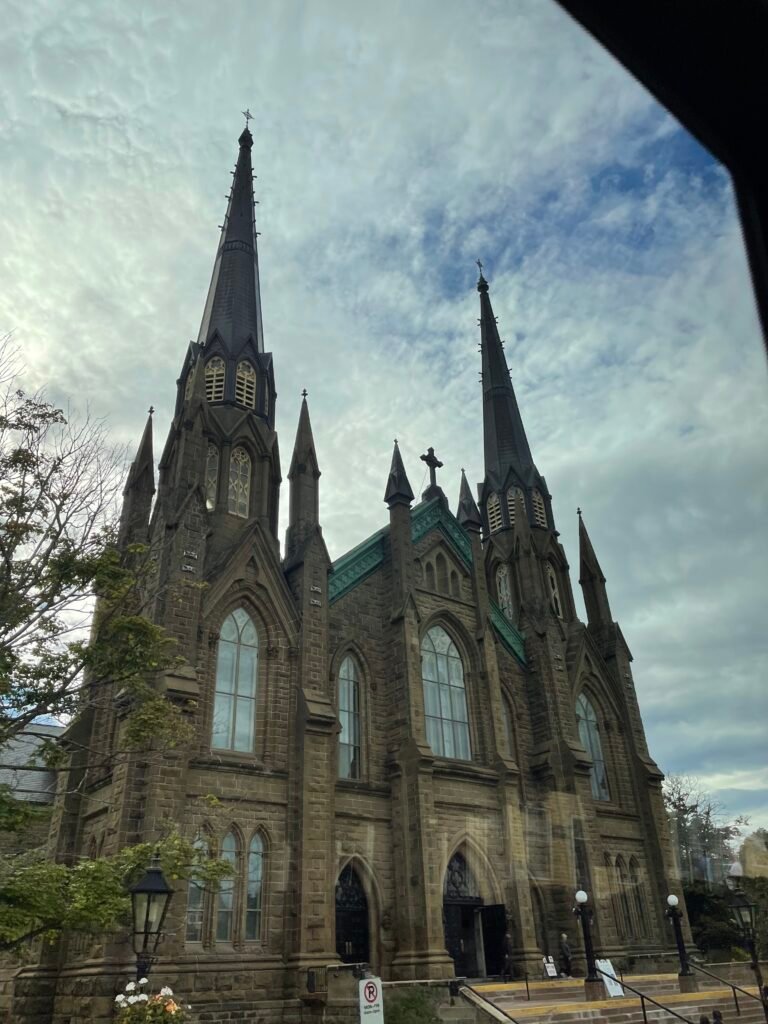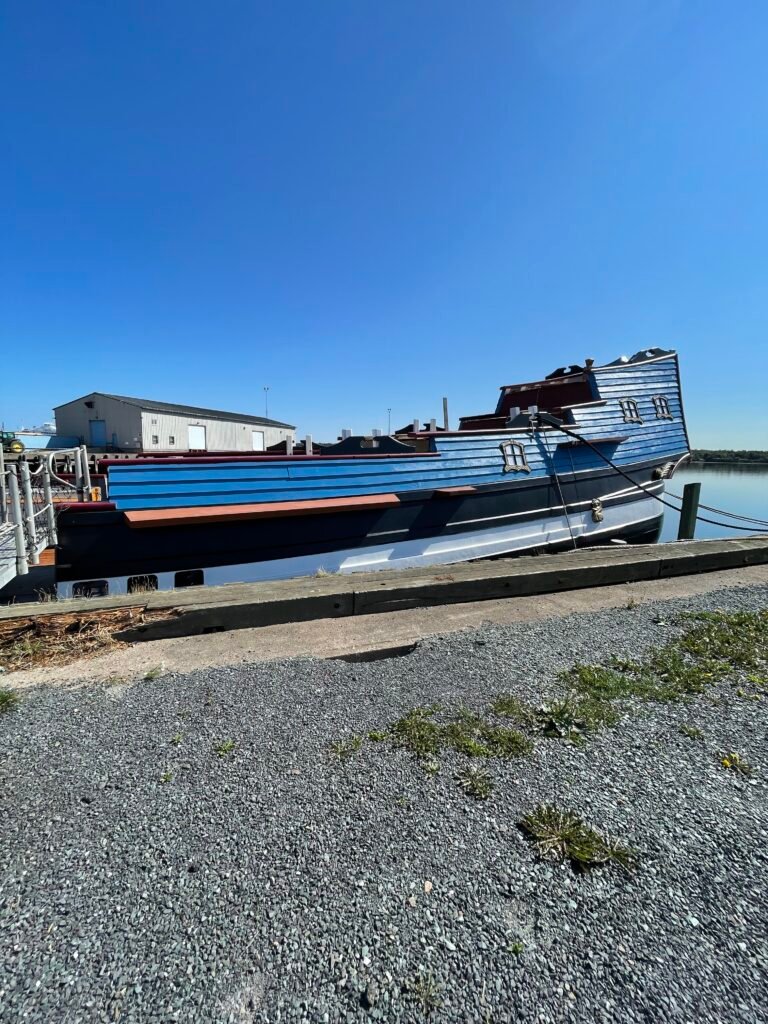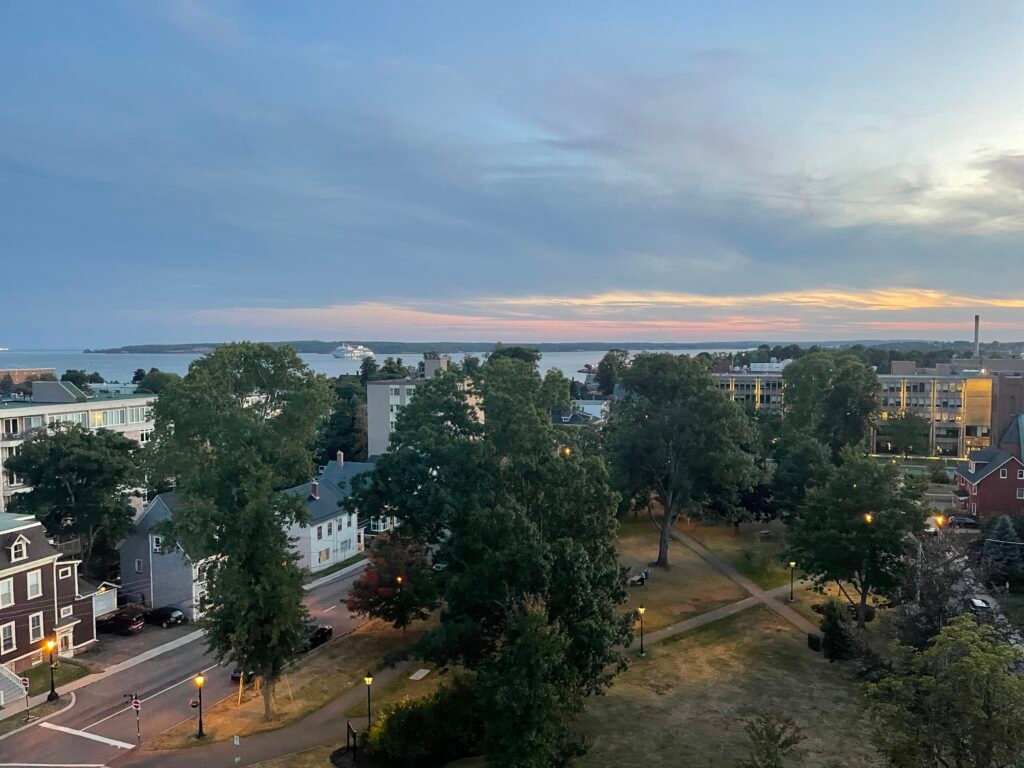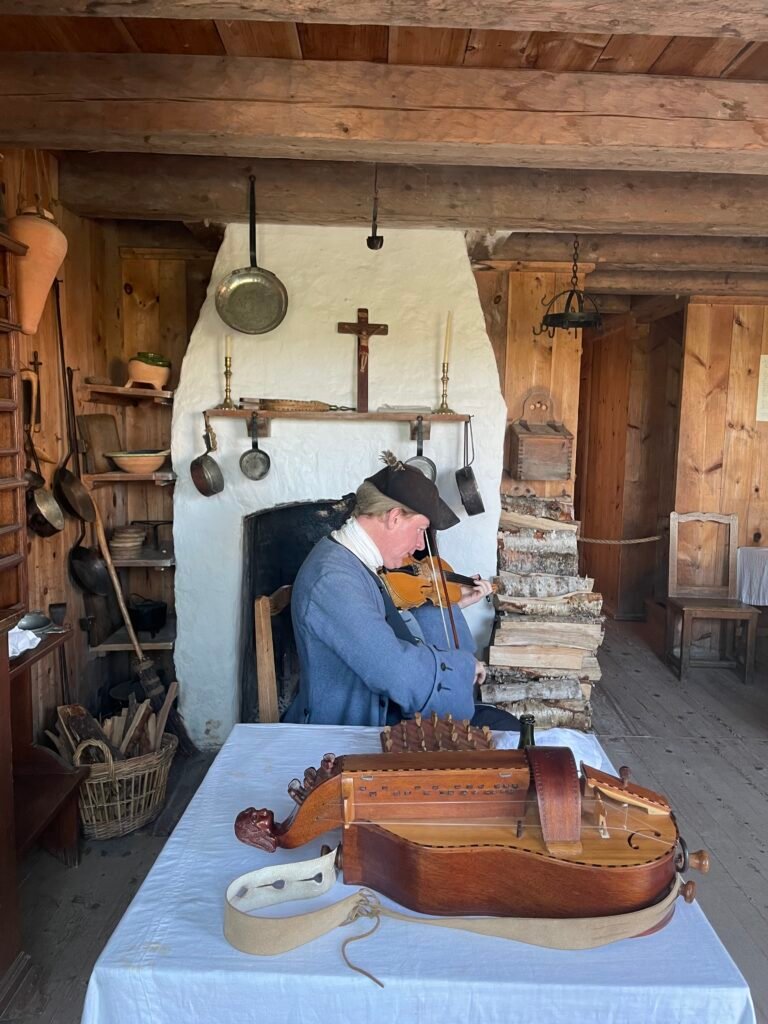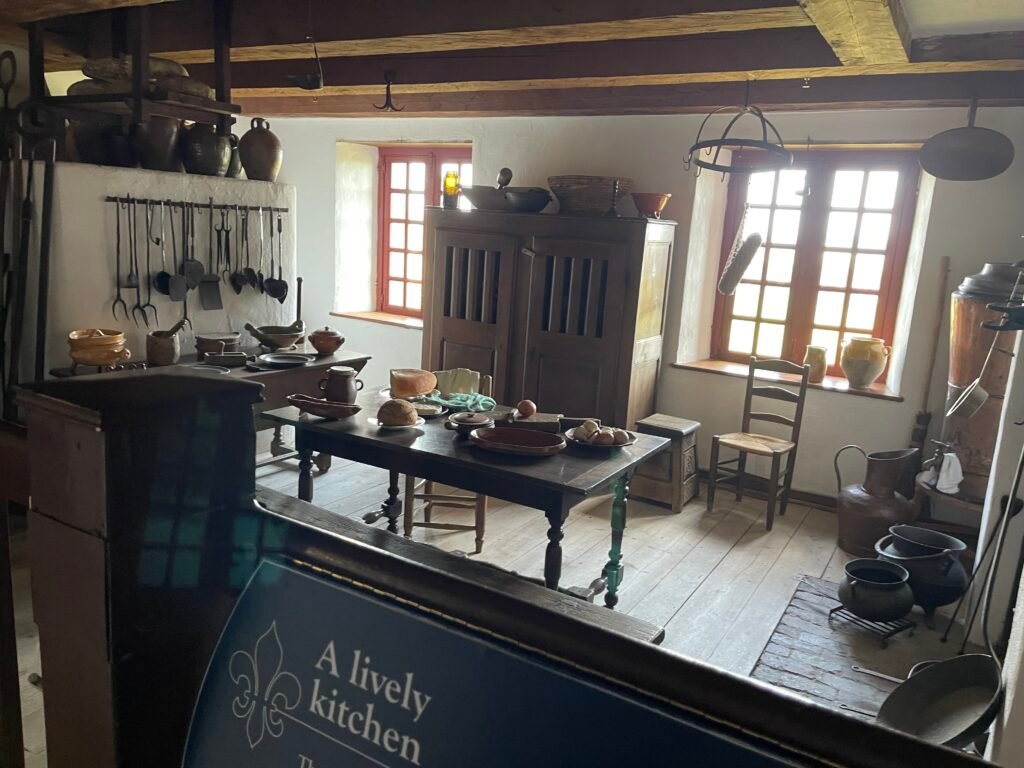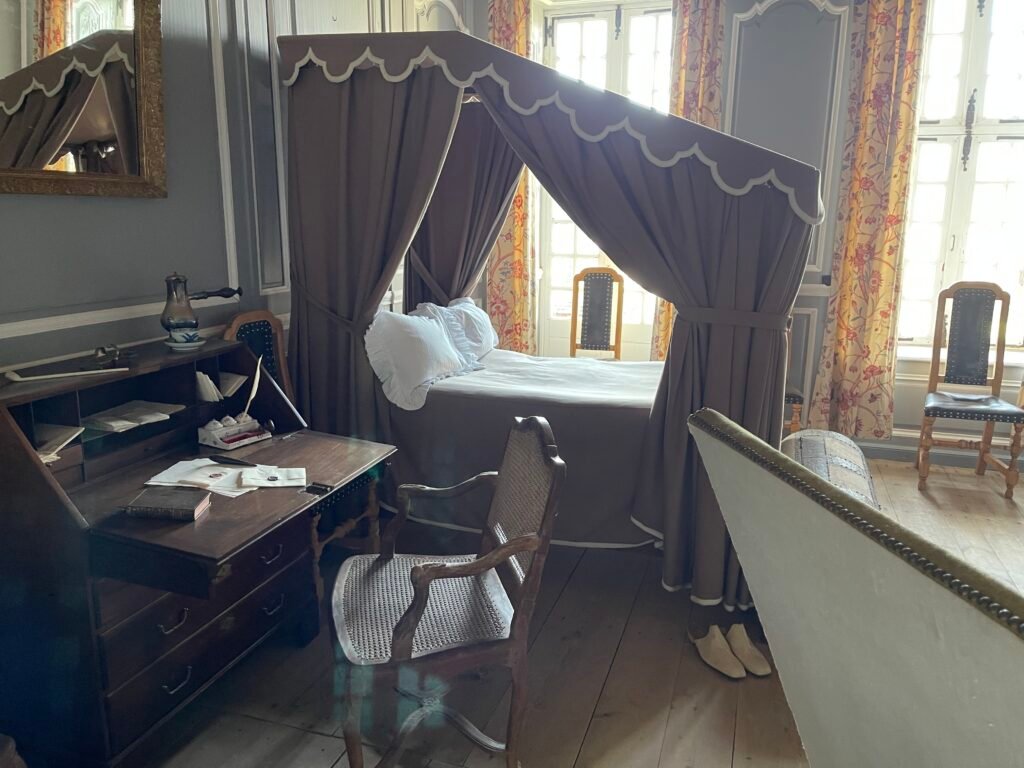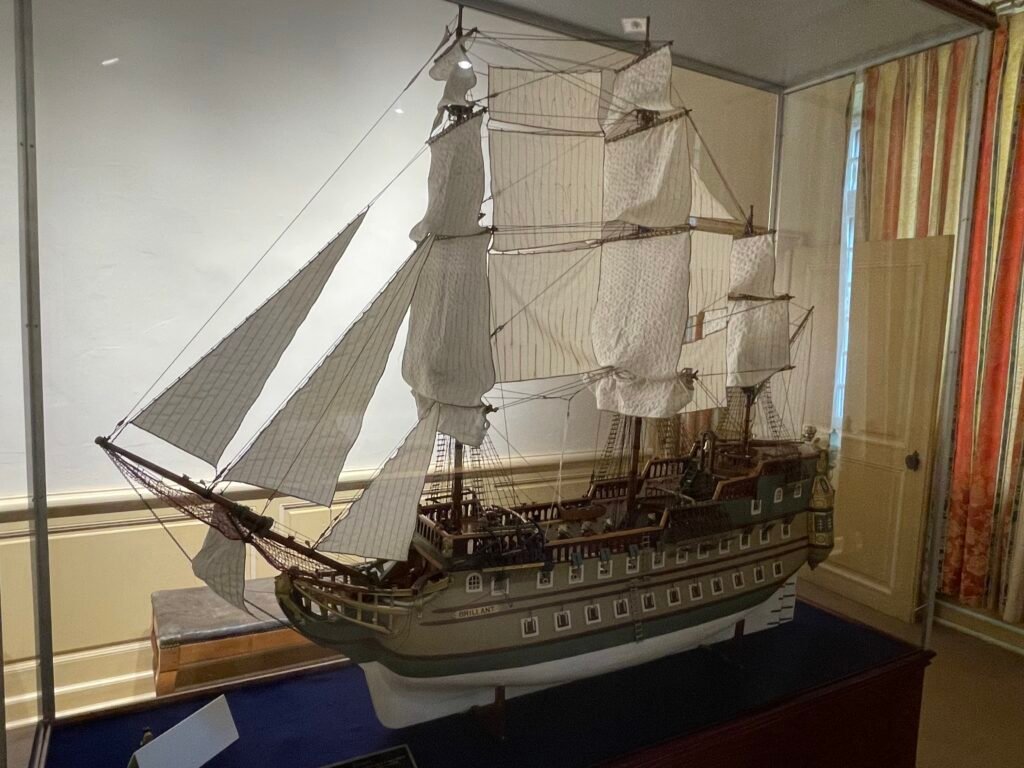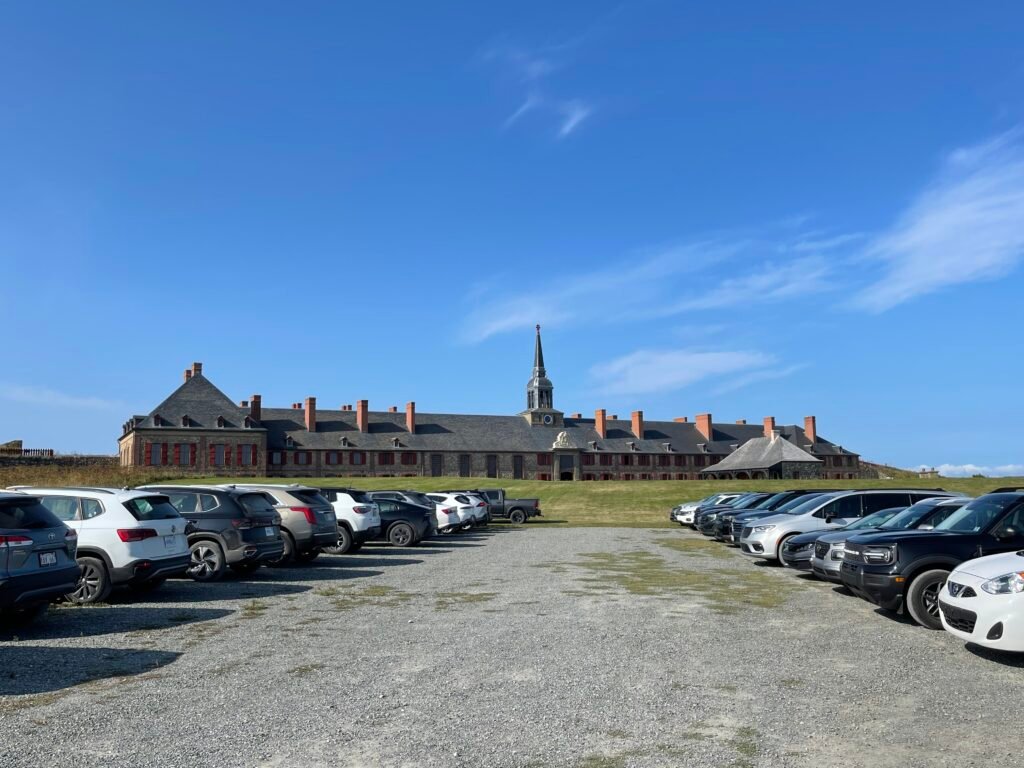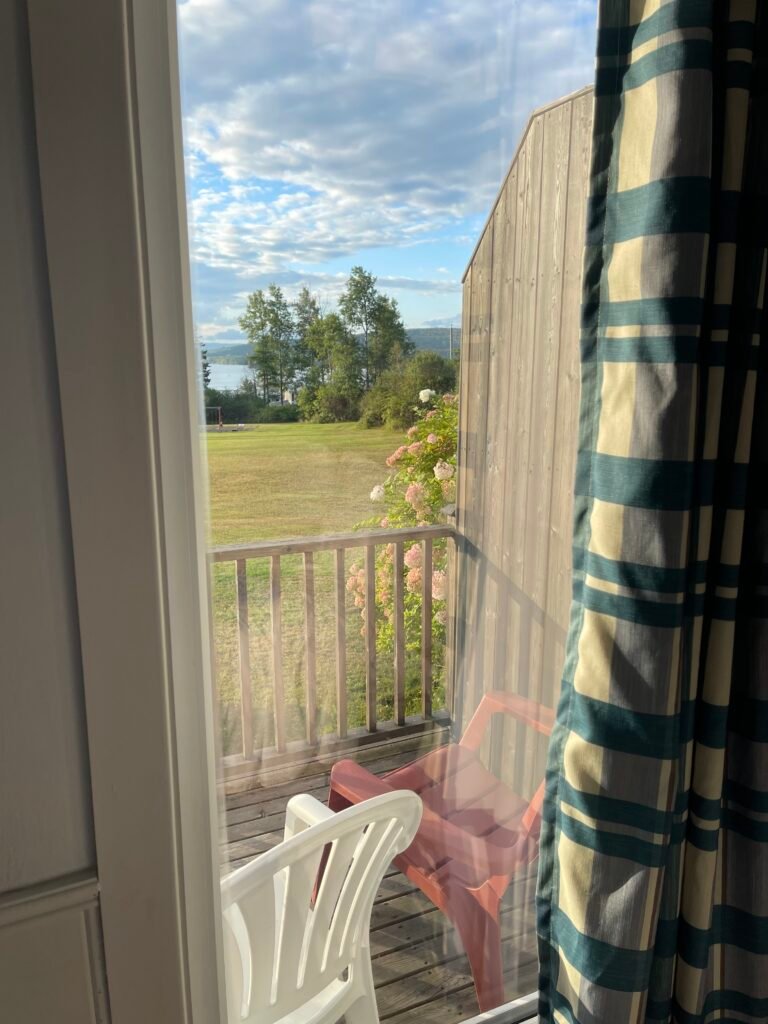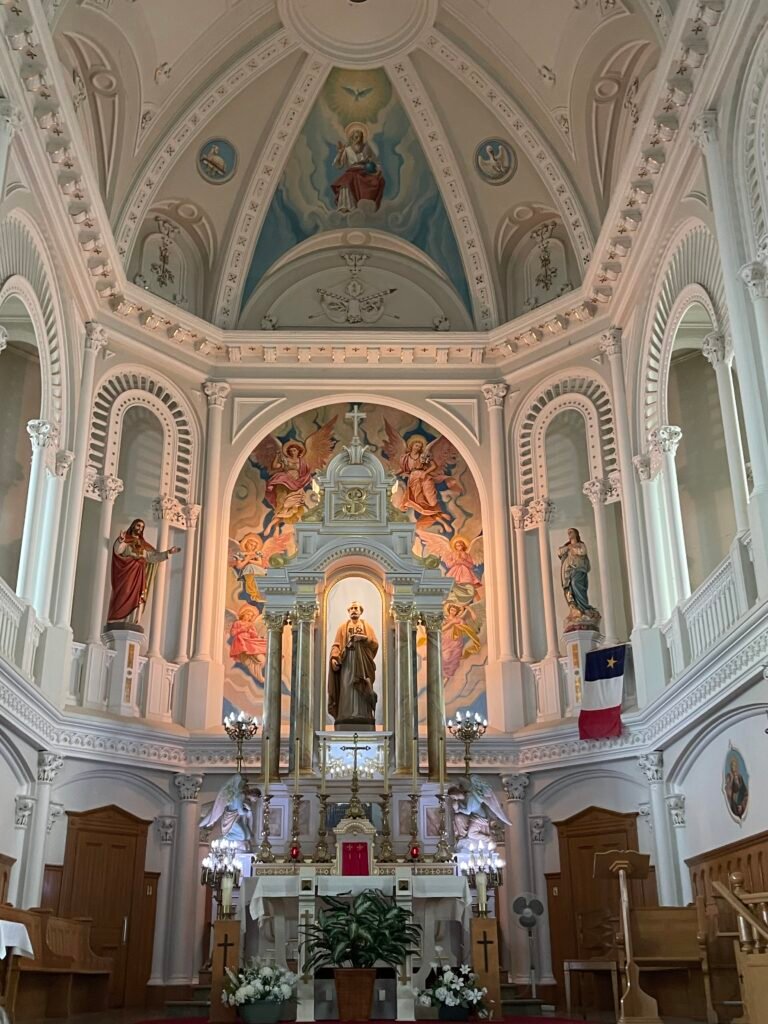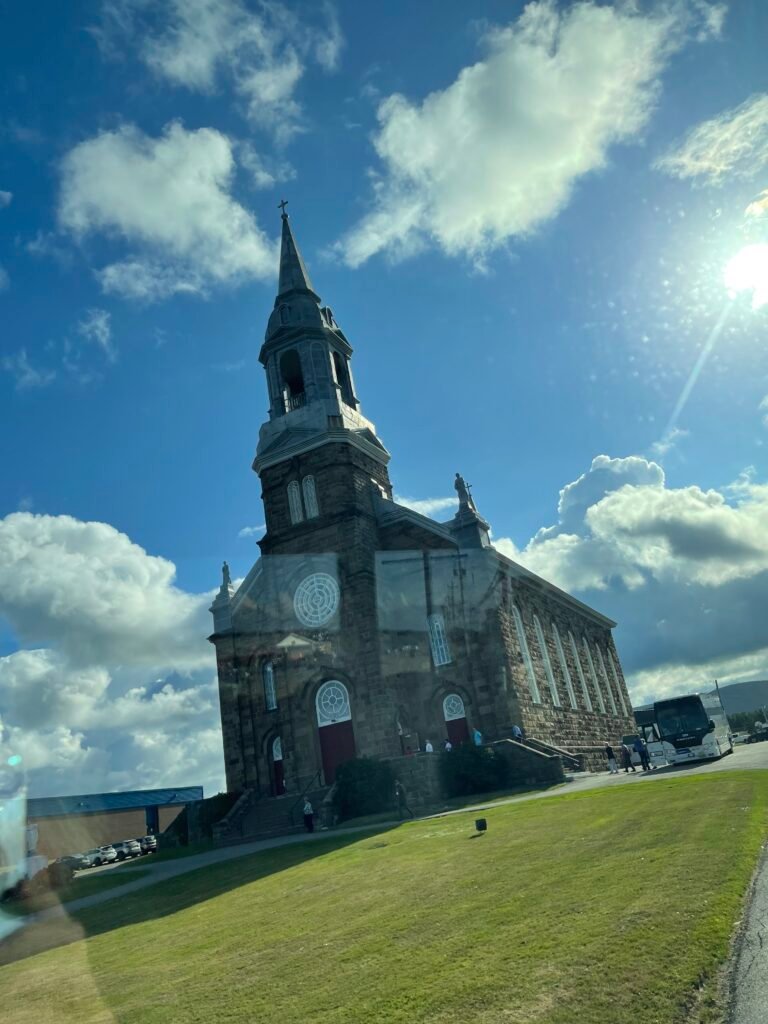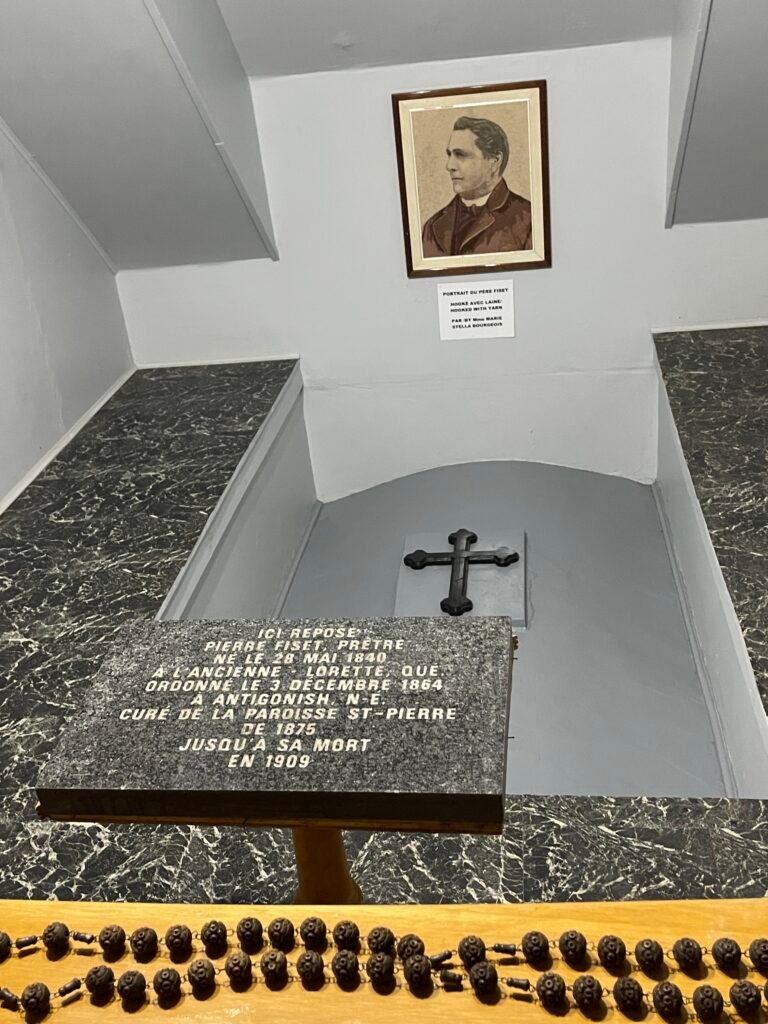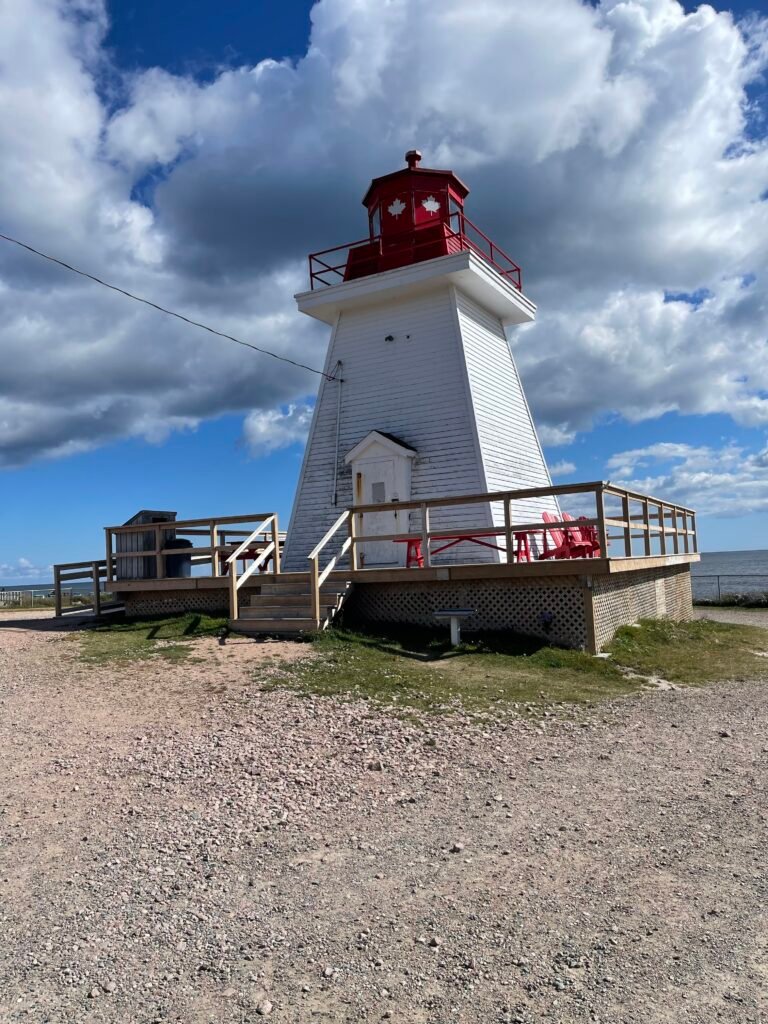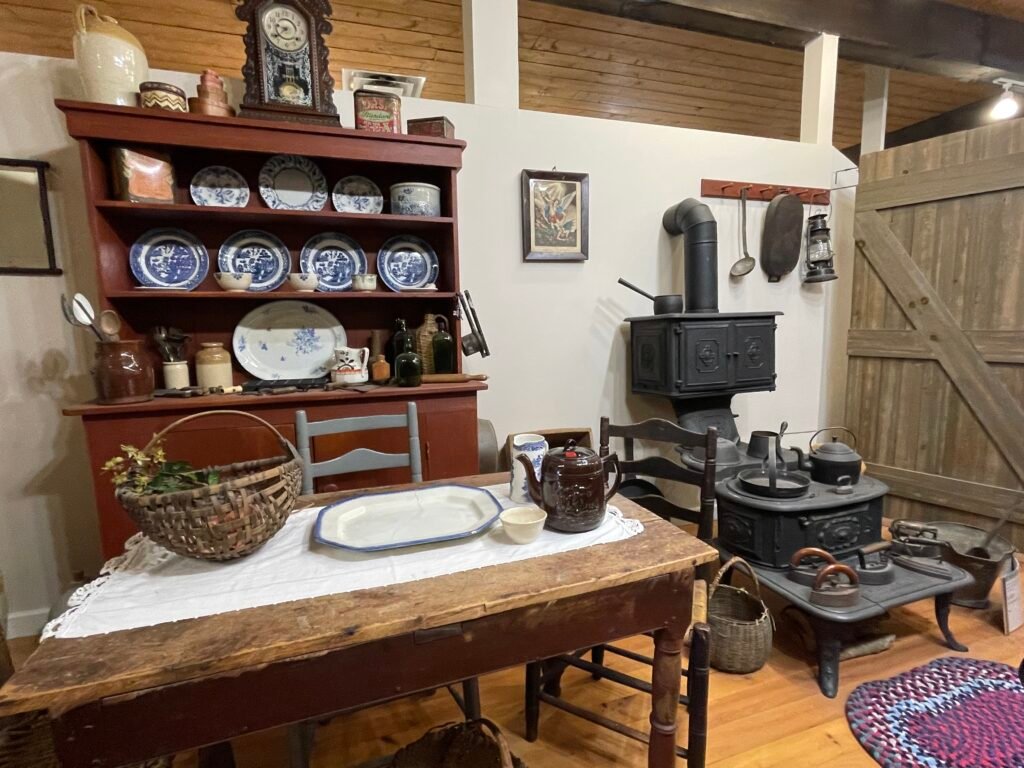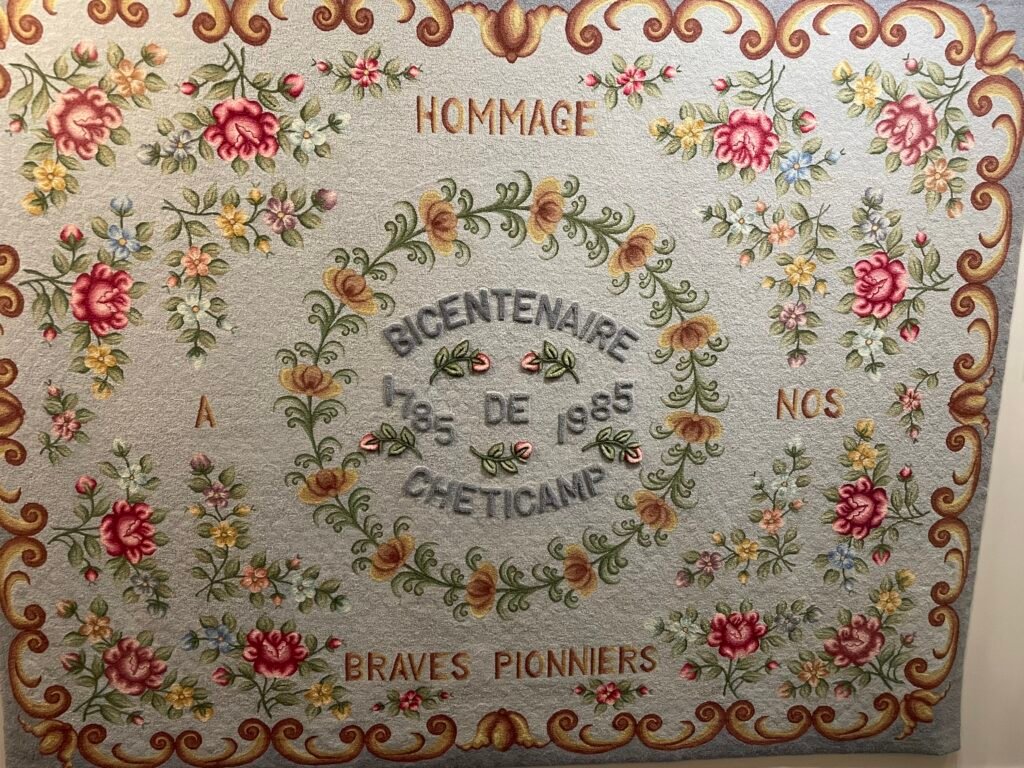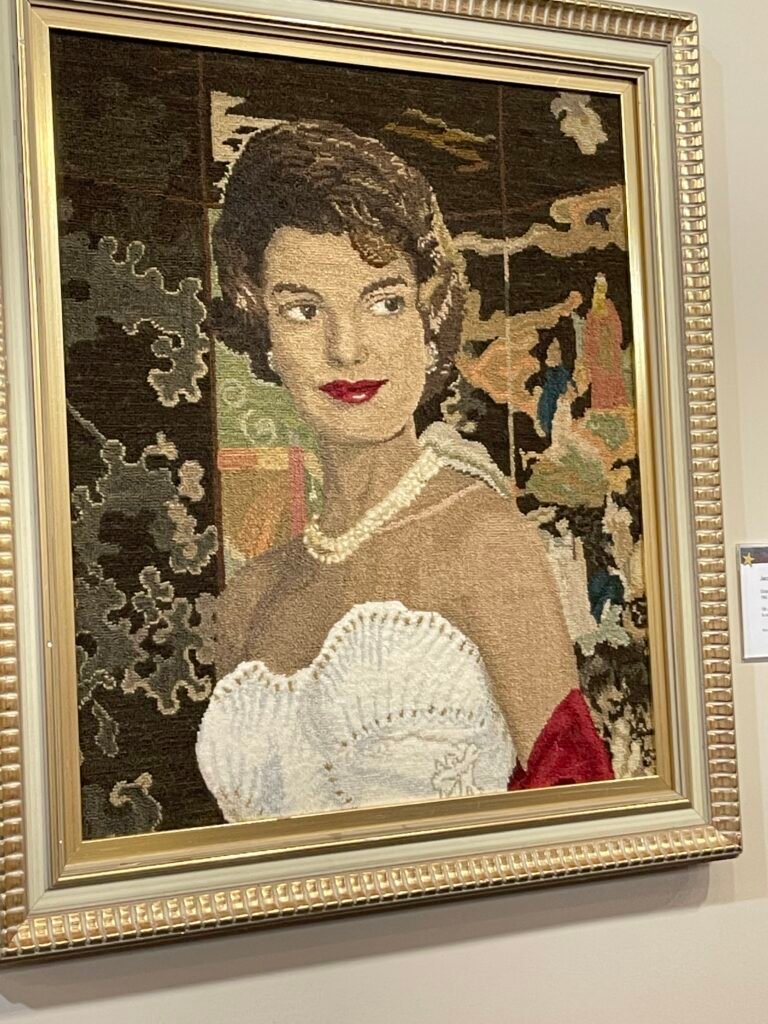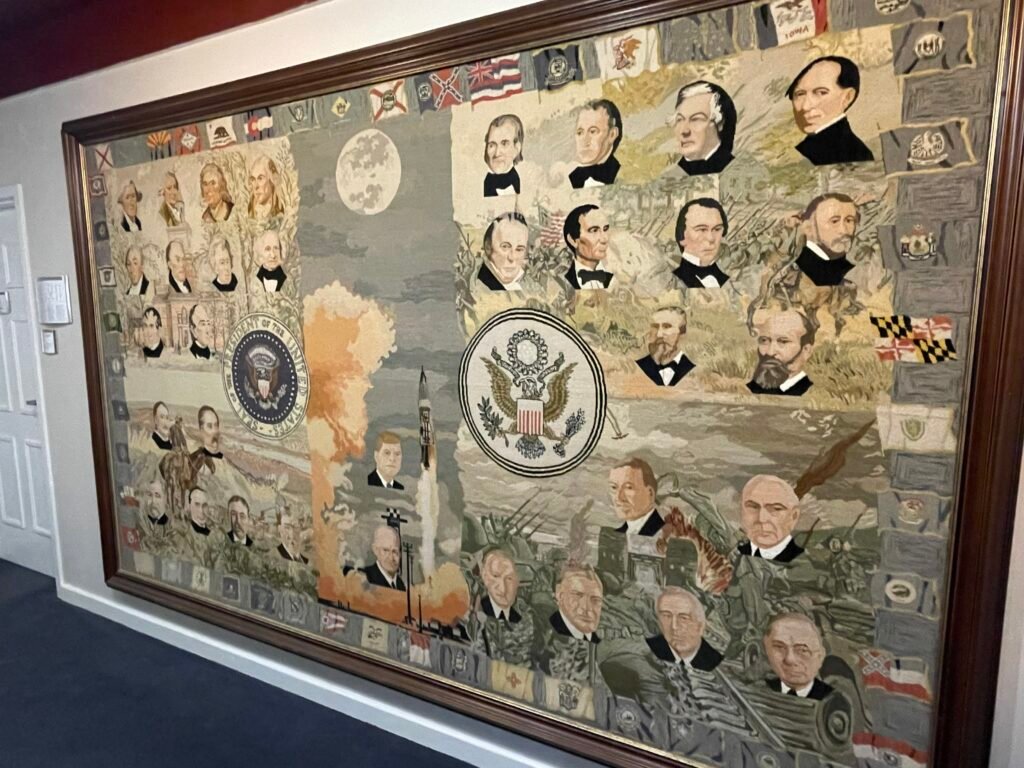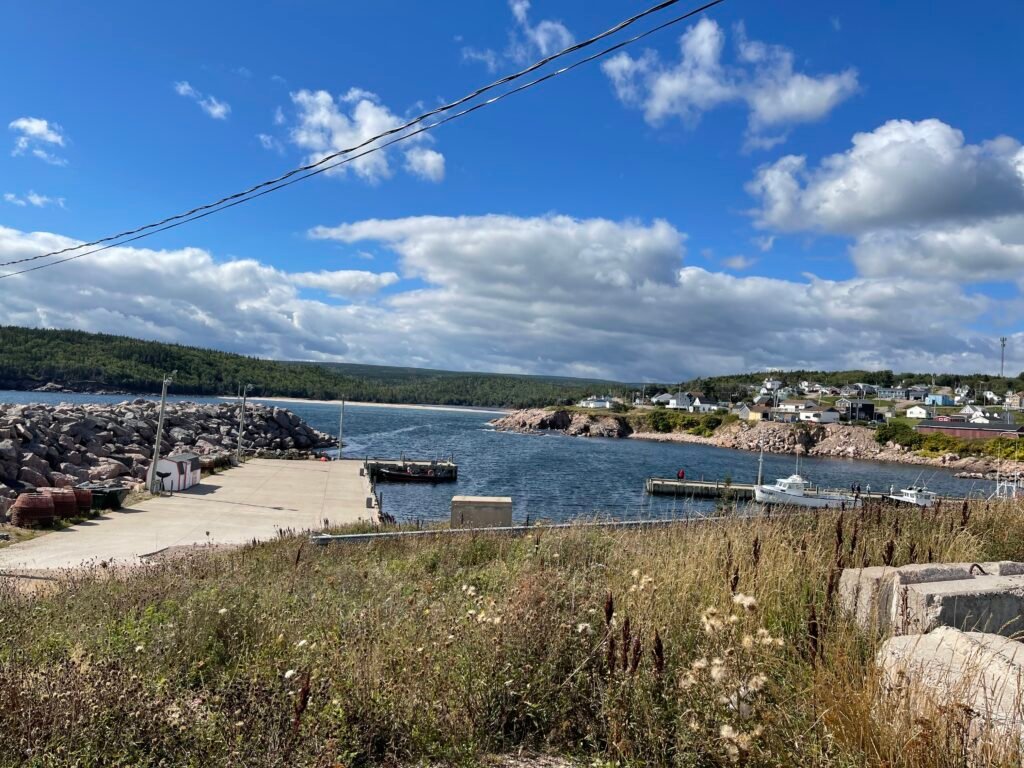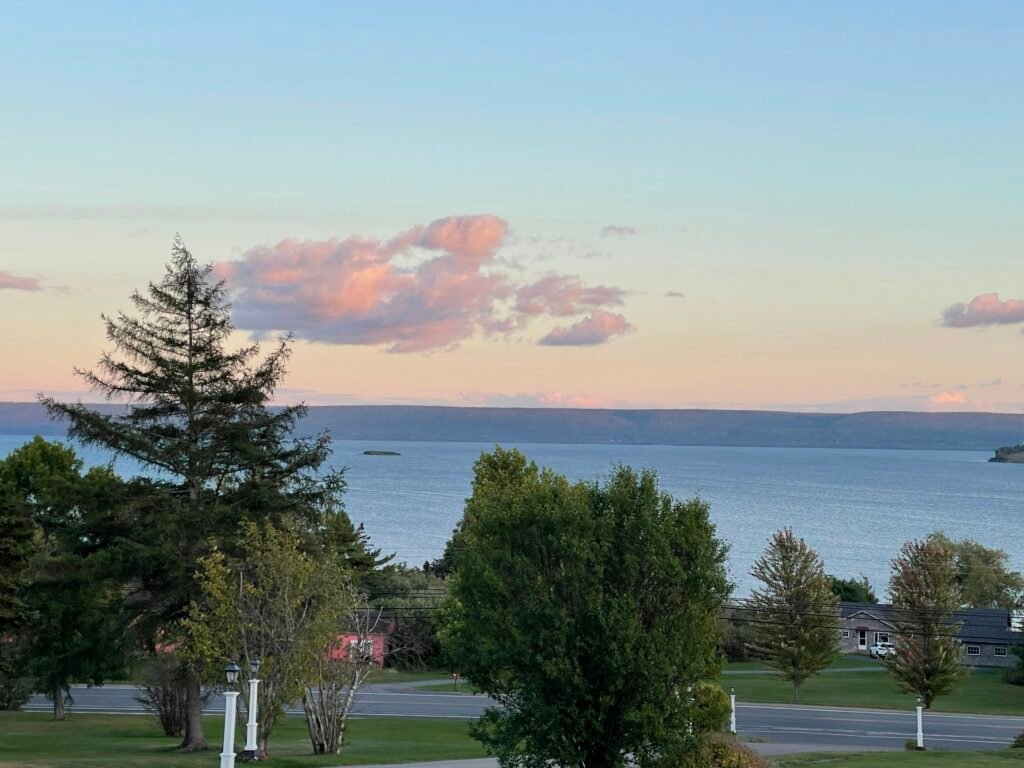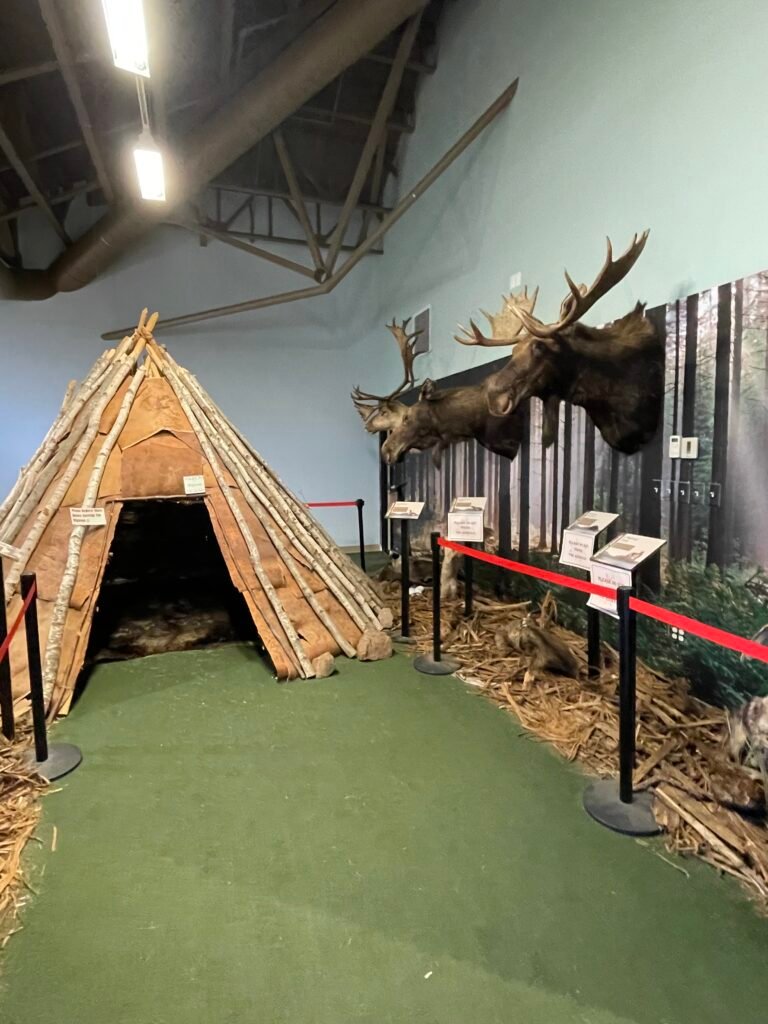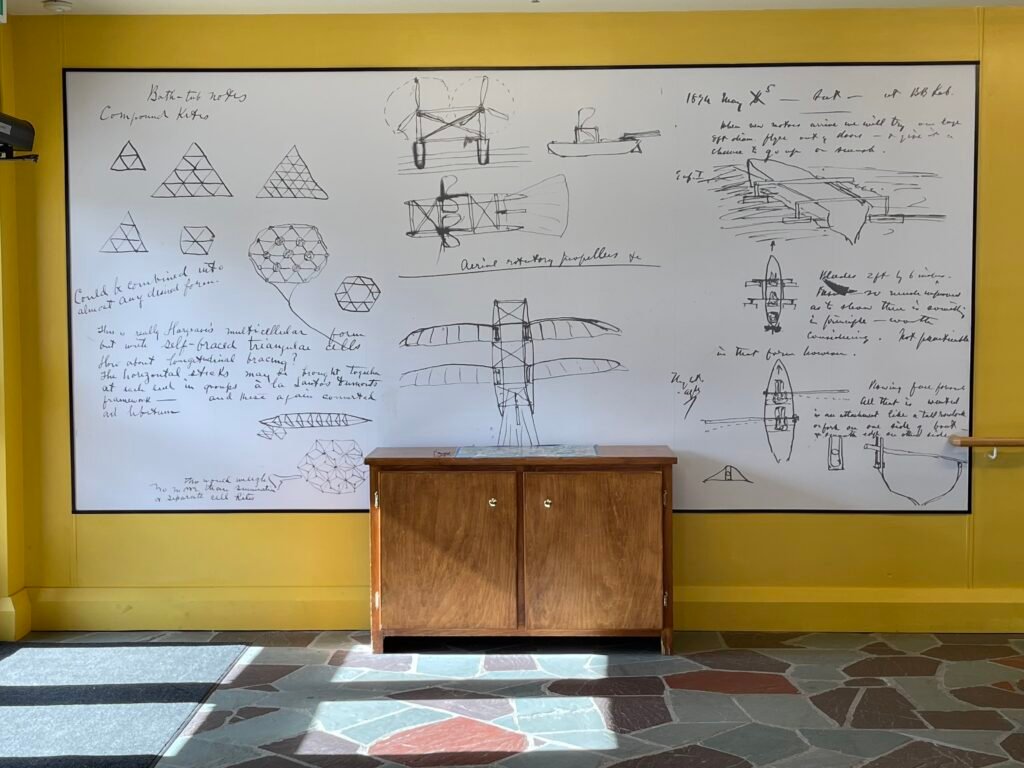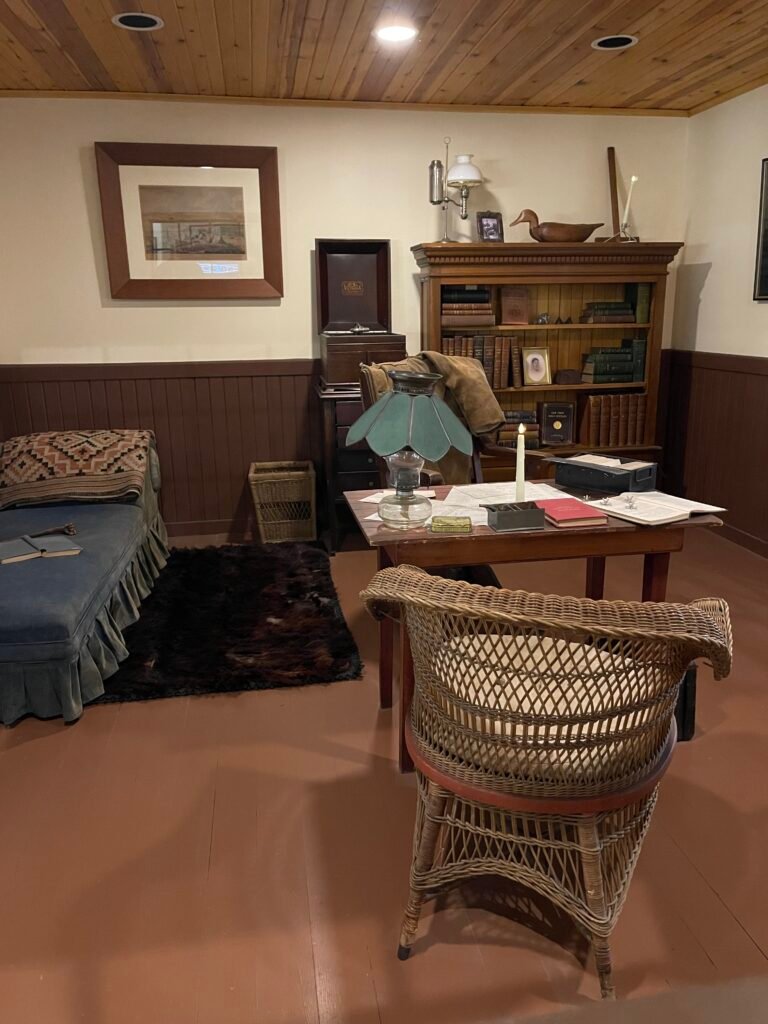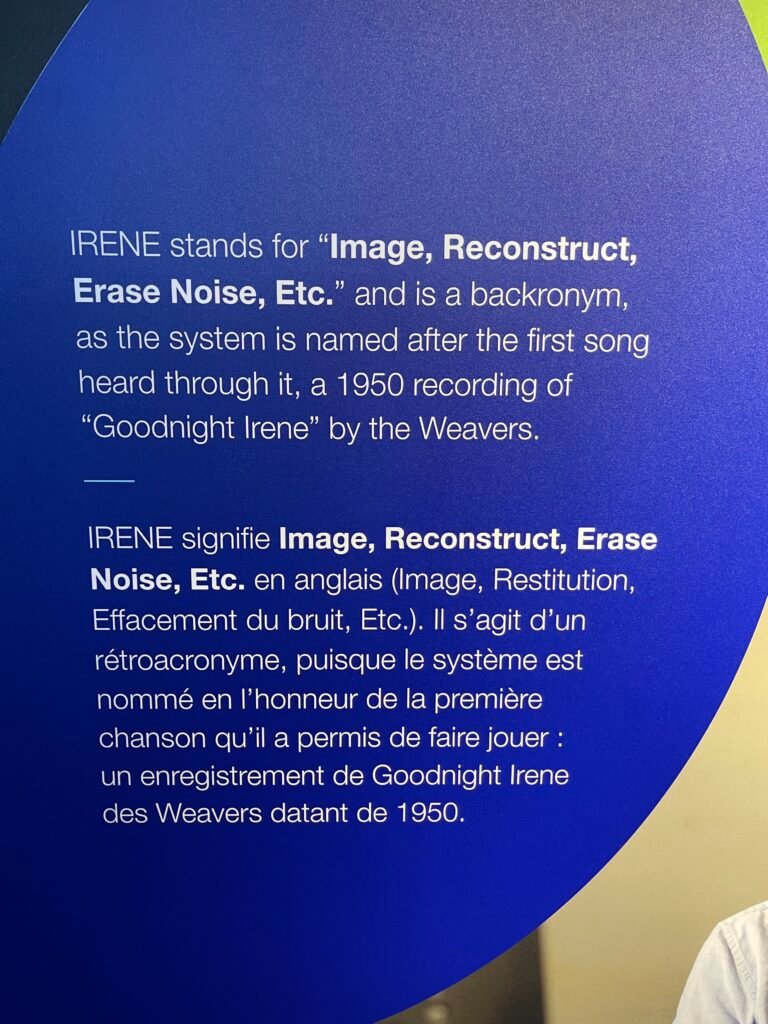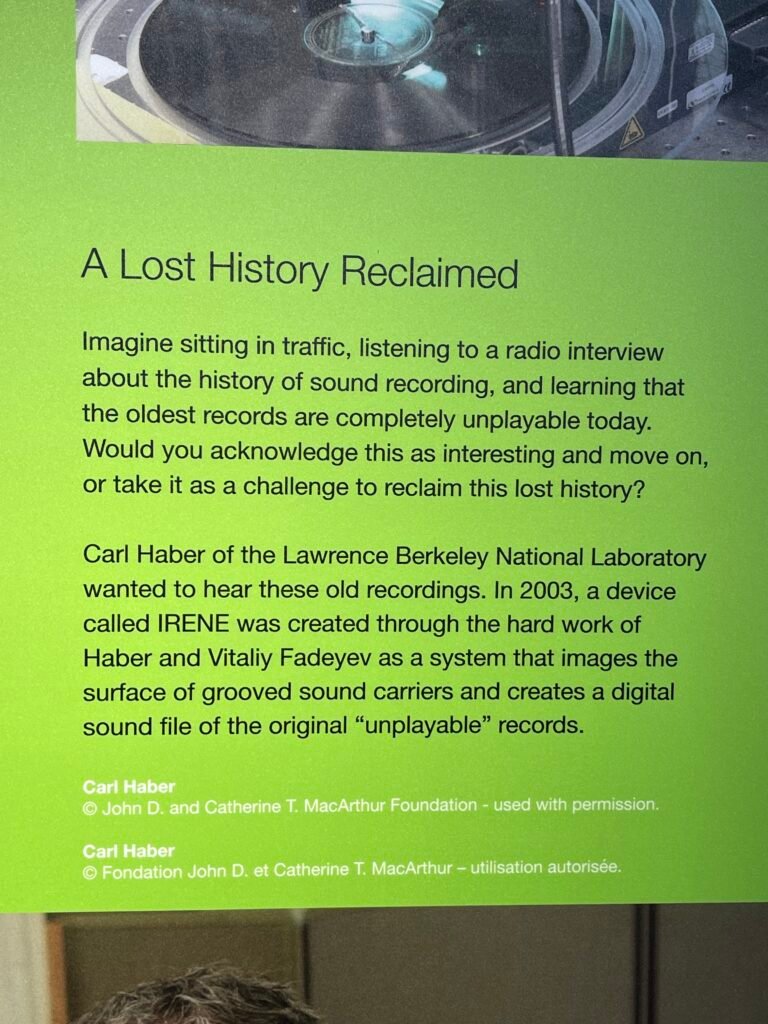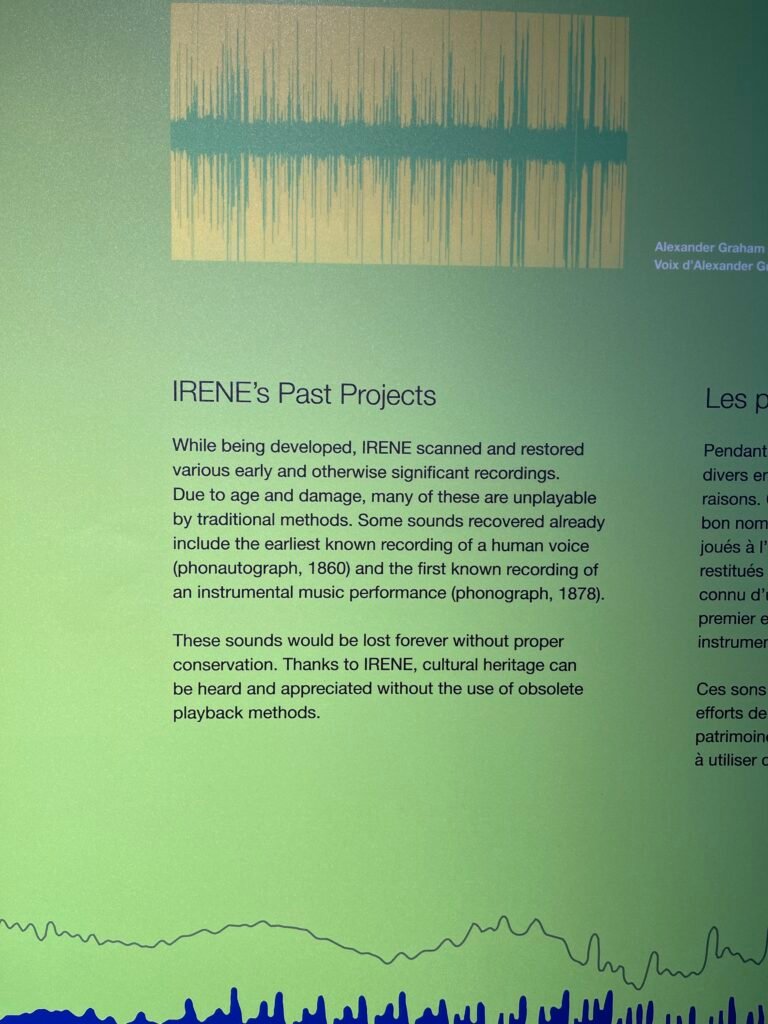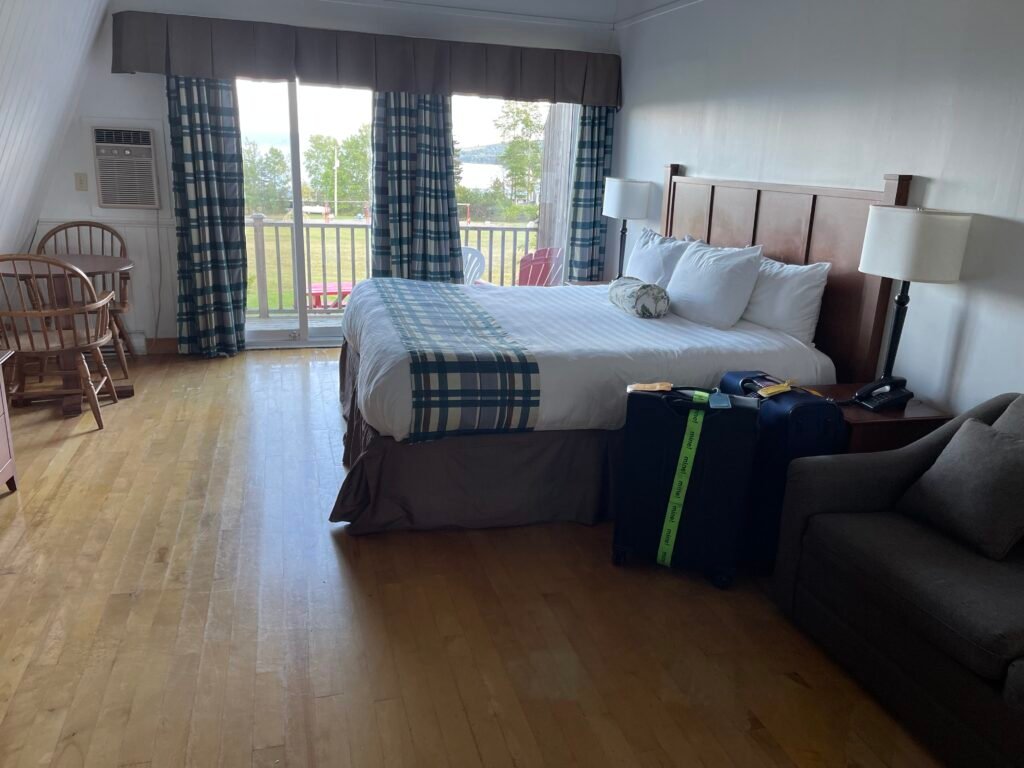Accommodation: Four Points Halifax Hotel
We boarded our bus after breakfast and off we went with our local guide, to visit Peggy’s Cove, which is nestled along the shores of St. Margaret’s Bay. The cove is a small fishing community and is one of Canada’s most popular tourist spots.
Only 35 residents live in the cove during the summer with 30 residing there during the winter months. The cove has everything needed to support their lives…a church, a school, a general store, and of course, fish and lobsters!!
The lighthouse at Peggy’s Cove is one of the most photographed of lighthouses, (I know…they said that about the last lighthouse we visited on this tour), and it truly makes for a beautiful photo with the rocks that have been smoothed by the winds and the sea crashing below. Many people have perished on the black rocks below the lighthouse because a rogue wave can arise suddenly and sweep anyone who is foolish enough to try to navigate the rocks, to their death. Our guide made the point… Don’t go on the black rocks!!!
One thought as to how the name Peggy’s Cove came about, was when a young child, the only survivor of a ship wreck, was rescued. She was subsequently adopted by a family living at the cove and they named her Peggy, and thus, the area became known as Peggy’s Cove. Others think the cove got its name because it is right off St Margaret’s Bay, and Peggy is a nickname for Margaret. Who knows what the true story is.
(Sadly, right near Peggy’s Cove in the entrance to St. Margaret’s Bay, was where on September 2, 1998, Swiss Air flight 111 crash landed killing all 229 souls onboard. The flight took off from JFK – its final destination being Geneva, Switzerland, when an onboard fire caused the plane to plunge into the sea. Ships, warships, aircraft, and submarines came from all over the world to aid in the retrieval of bodies and plane parts. The largest plane part that was discovered was the size of a dinner plate. That’s how enormous the devastation was. Additionally, two paintings by Picasso were on the plane and were never found. There is a monument marking the tragedy on the shore nearby.)
The Cove houses many artists and a famous one, William deGarth, not only painted beautiful watercolors of the sea, but he decided at the age of 70 to become a sculptor, and he created a mural carved in the huge granite stone that was in front of his home.
The work depicts thirty-two fishermen and their wives and children with the wings of St. Elmo, the patron saint of fisherman, protecting them. It also features the image of little Peggy, who deGarthe believed gave her name to the village.
Since Allan and I have been to Peggy’s Cove before, and have already seen the sites, we stopped into the Sou’Wester, a restaurant in Peggy’s cove that overlooks the water, and had a chocolate danish and a cup of coffee.
We did walk around the cove a bit, and it was wonderful, with the sun shining on our faces, the balmy winds at our backs, and the beauty of the sea right in front of us. It was a lovely place to visit.
After visiting Peggy’s Cove, we boarded the bus and drove to the town of Lunenburg. The town became an UNESCO World Heritage site in 1995. It is apparently an excellent example of a British settlement, with original layout and appearance of the 1800’s. The town’s homes and stores are painted in vibrant colors and it was nice to walk around and admire them all.
Some of the houses have a unique feature… a bump! Lunenburg builders extended the central dormer out and down from the roof, thereby creating an overhang or ‘bump’ above the main entrance. It has been fondly named “the Lunenburg Bump” and it can be found in many homes in the area.
We had lunch with friends and walked around some more, finishing with a delicious ice cream cone. Then it was back in the bus and our local guide regaled us with stories about the area.
As we neared Halifax, our guide told us that on December 6, 1917, one of the greatest disasters in Canadian history occurred. The ship, the SS Mont-Blanc, a French cargo ship carrying explosives, collided with the SS Imo, a Belgian Relief vessel outside the Halifax harbor. The resulting explosion, devastated the north end of Halifax, killing approximately 2,000 people and injuring about 9,000. It was the largest artificial explosion before the use of nuclear weapons.
Interestingly, significant aid came from Boston, Massachusetts in an effort to help revive the devastation of the homes and businesses as well as to help the families who lost loved ones. To this day, every Christmas, the government of Halifax sends a Christmas tree to Boston to be erected in the town square, as a thank you for all the aid they sent. The Bostonians who were builders, plumbers, architects, iron workers, etc. apparently remained in Halifax for around 5 years, helping to rebuild the area and giving aid to those who needed it. (Our guide said 35 years, but I looked it up and it was about 5 years, which is still very generous and was much appreciated.)
We also passed by Our Lady of Sorrows Chapel on our way to our hotel and our bus driver Mark told us it is famous for being built in one day on August 31, 1843. On that day, 1,800 to 2,000 parishioners, many of them Irish immigrants, gathered to raise the frame, roof, and complete the exterior and interior painting of the chapel in just one day, on a pre-prepared foundation. Unbelievable how that many people could work together and accomplish such a task.
We all went to the Farewell Dinner and had a very nice time and we bid goodbye and safe travels to our new friends. I gave my blog site to everyone and someone thought that I made money on my blog. If only! Trust me…I only write for the sheer enjoyment. No money involved. And please excuse any misspellings or punctuation mistakes. I write each post every night on my Iphone…which isn’t the easiest to do.
Till our next trip. Hope you’ll tune in.

DeGrath’s sculpture
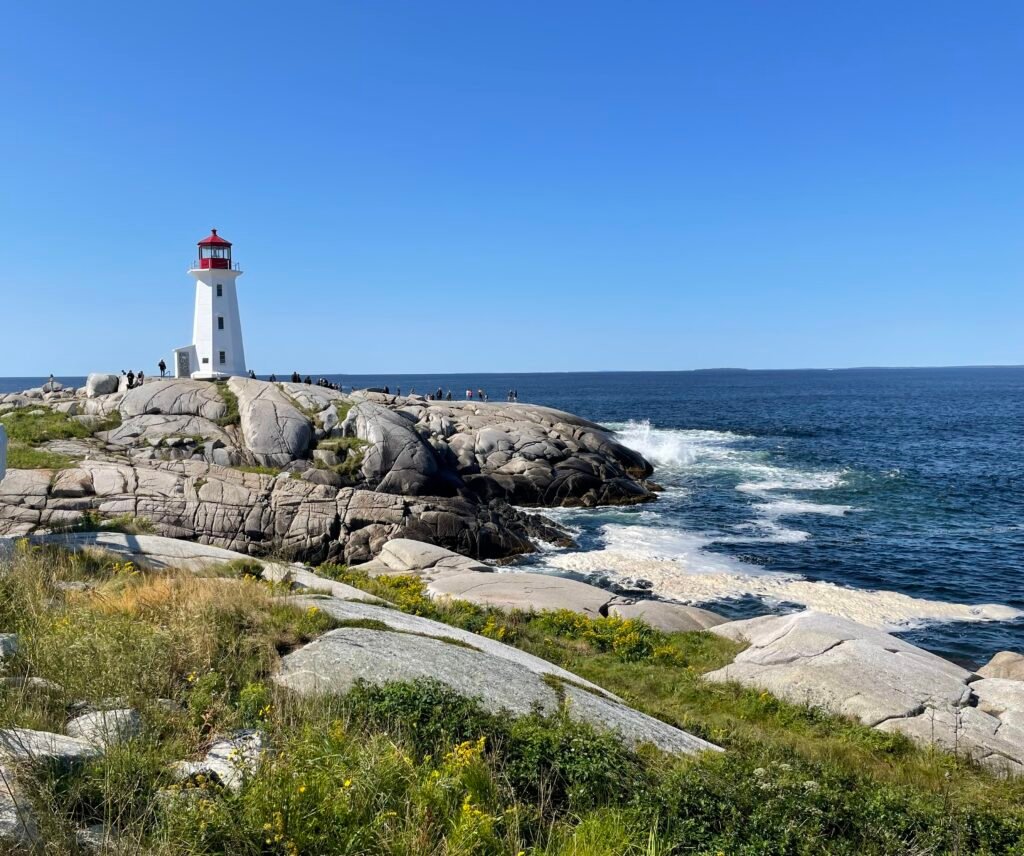
Peggy’s Cove lighthouse
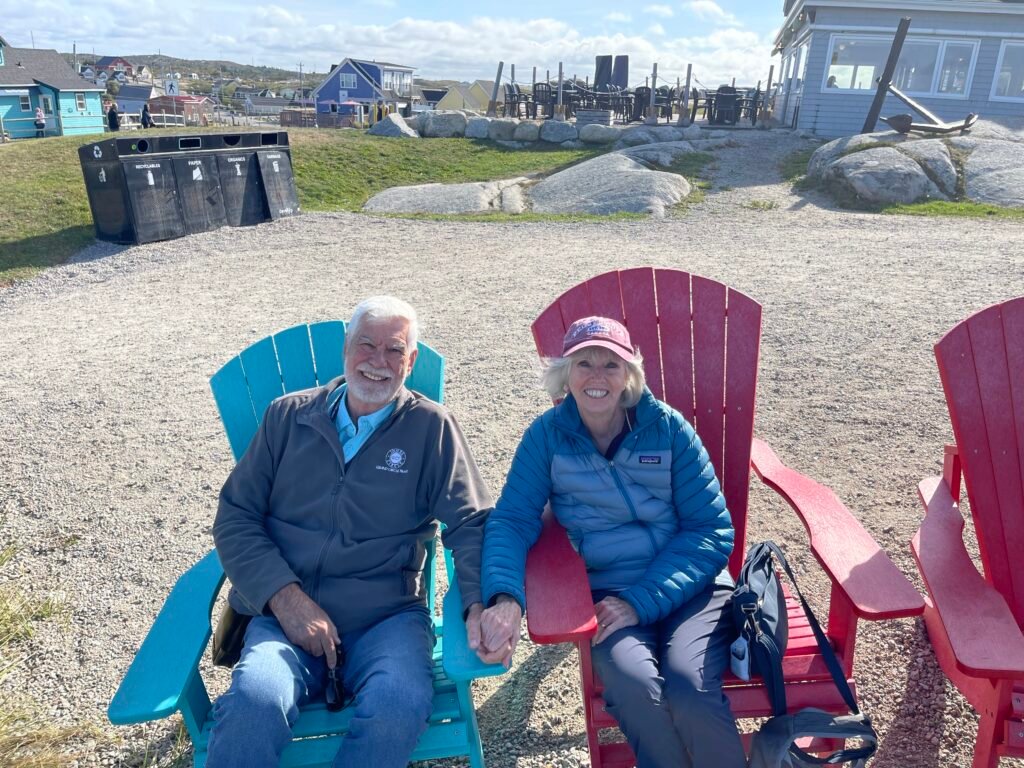
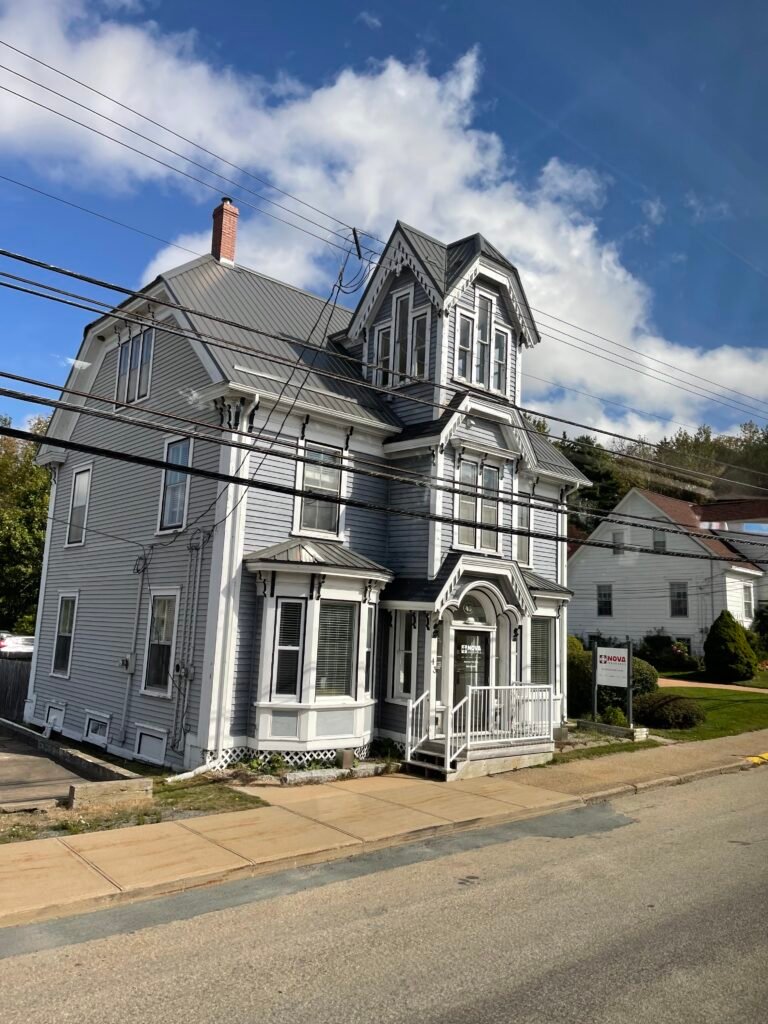
Good example of the Lunenburg Bump
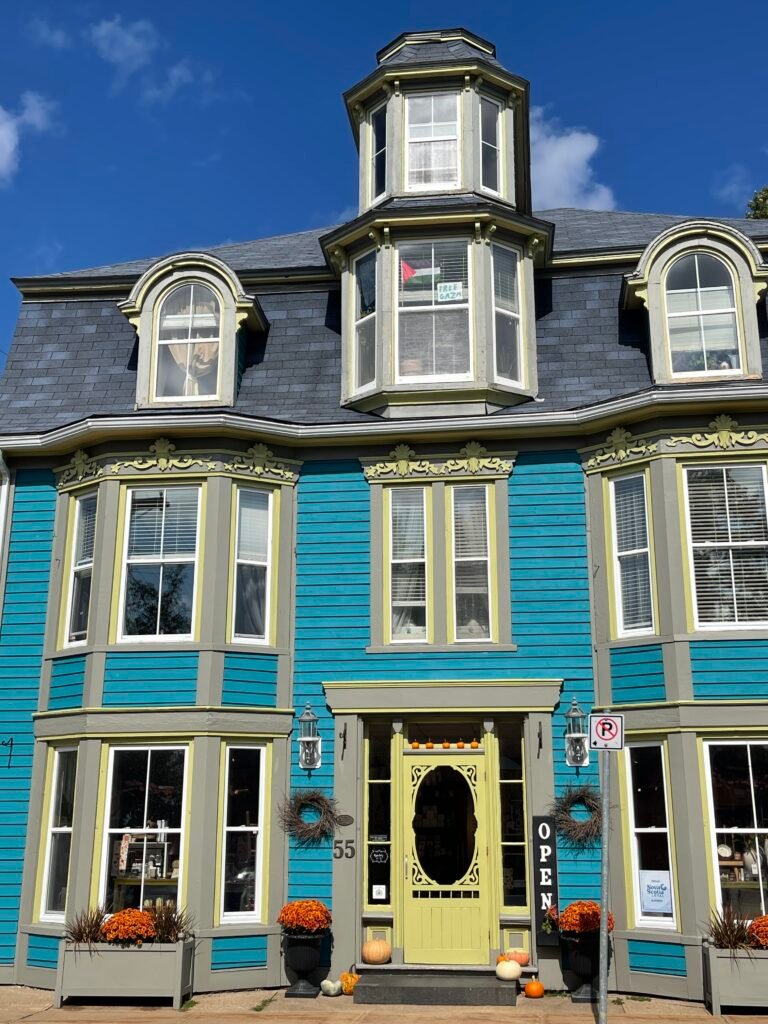

Colorful buildings in Lunenburg.

Our Lady of Sorrows

